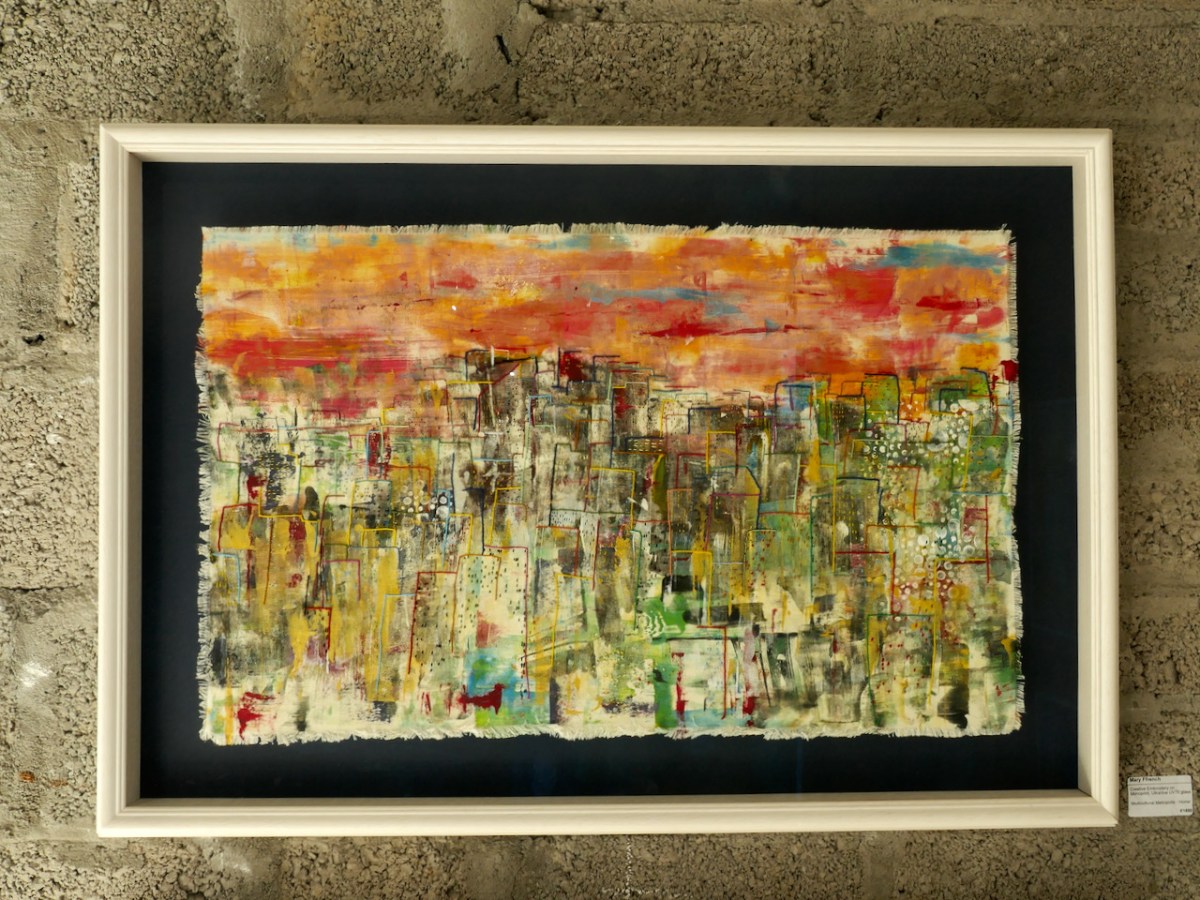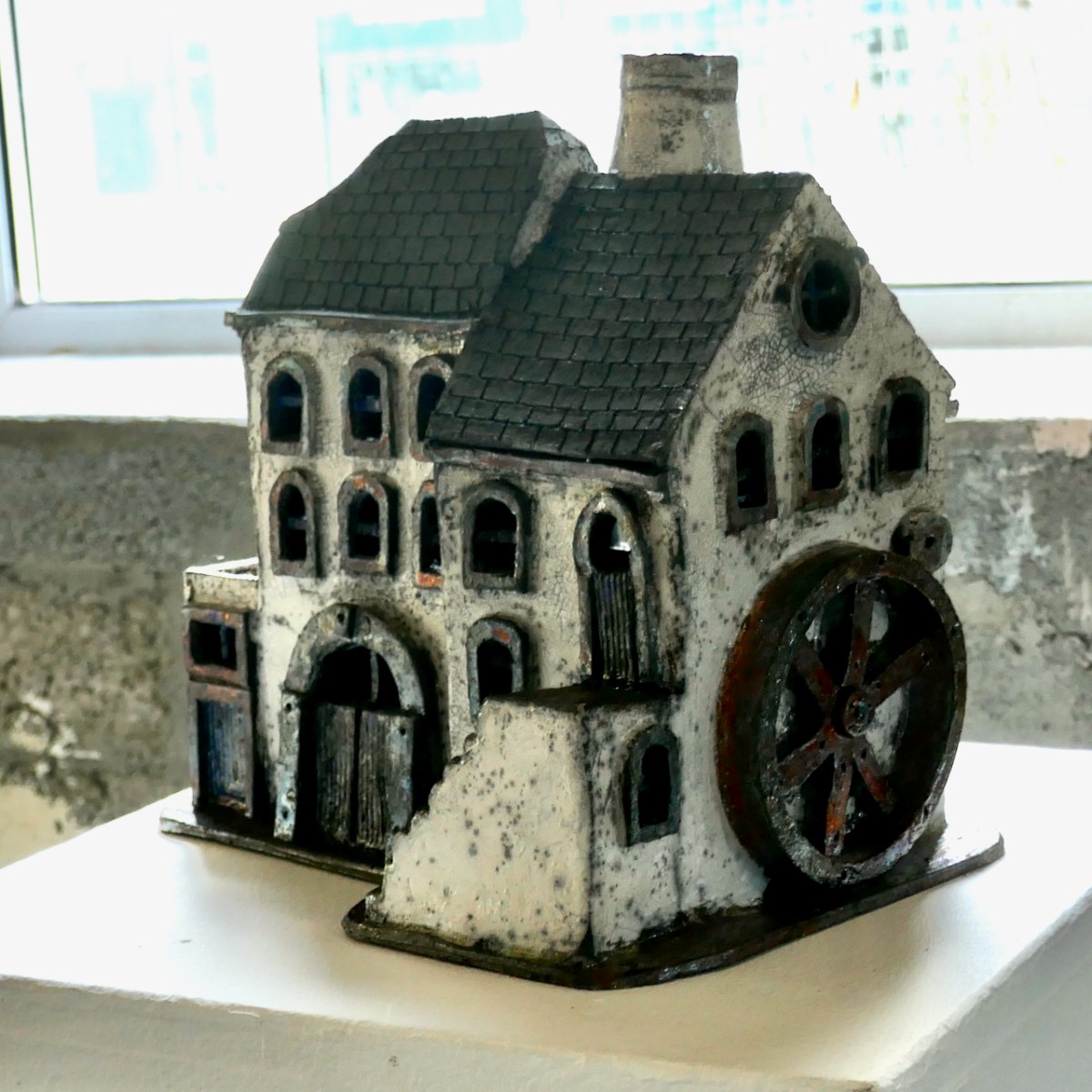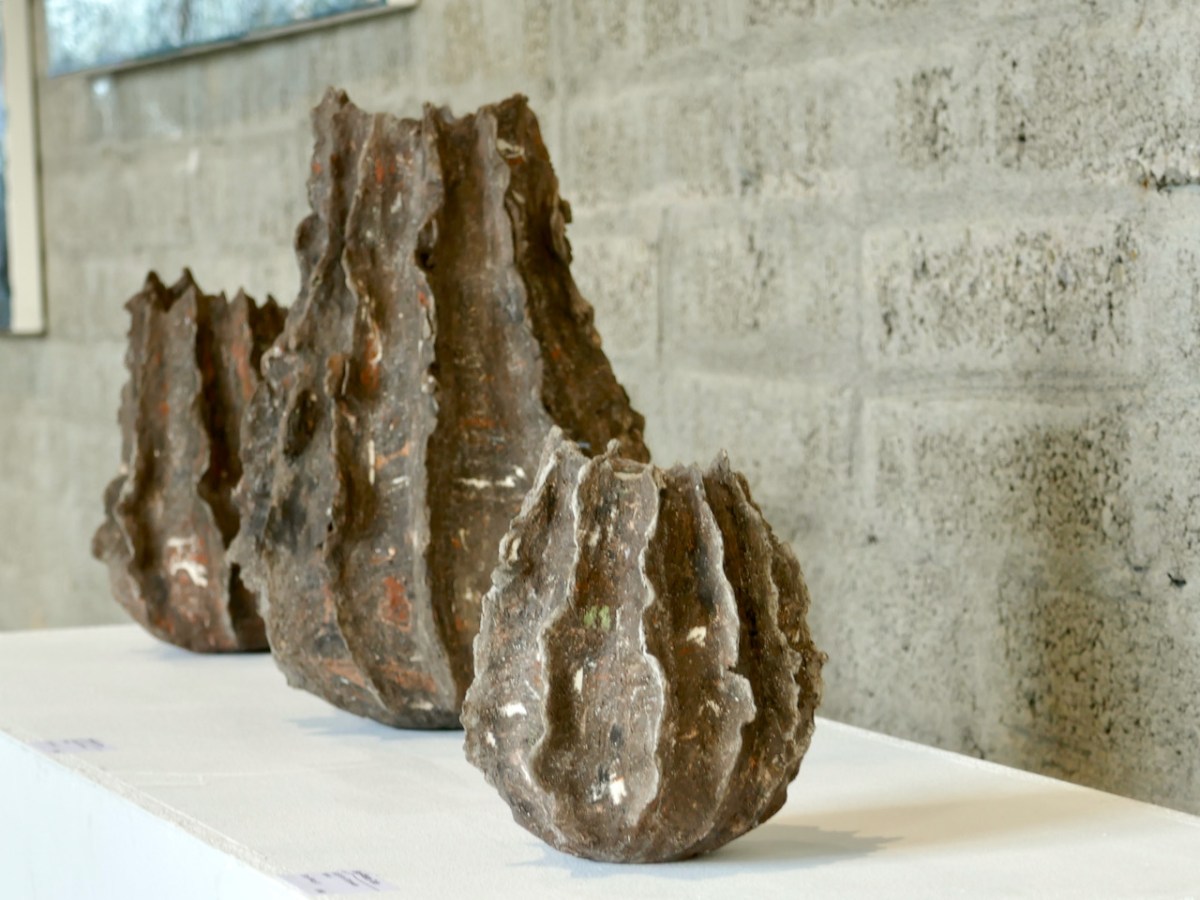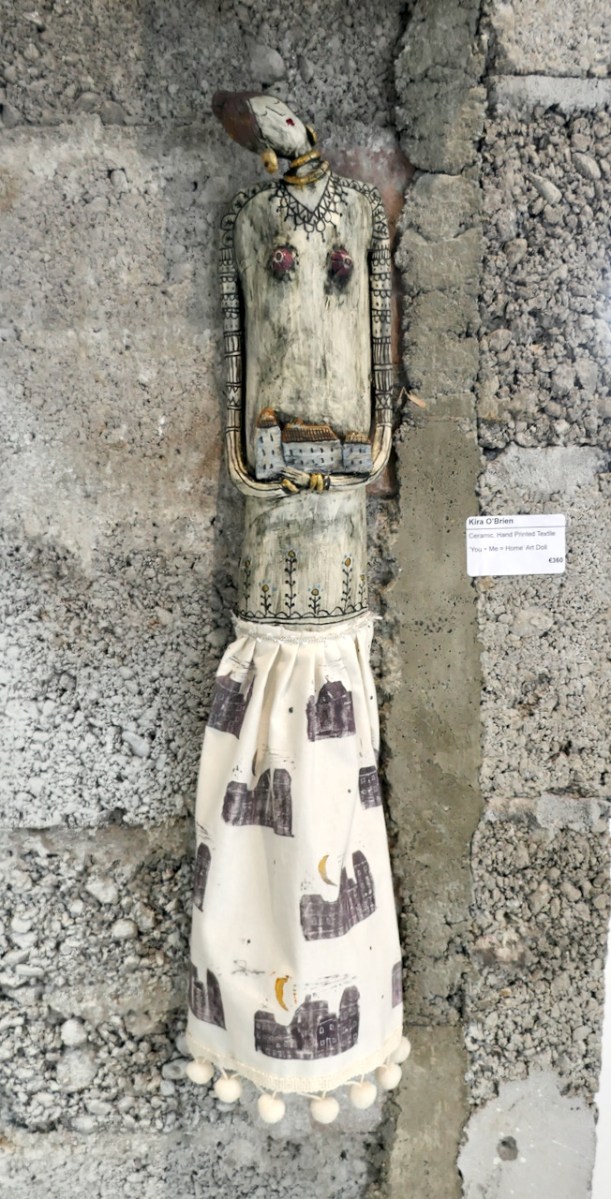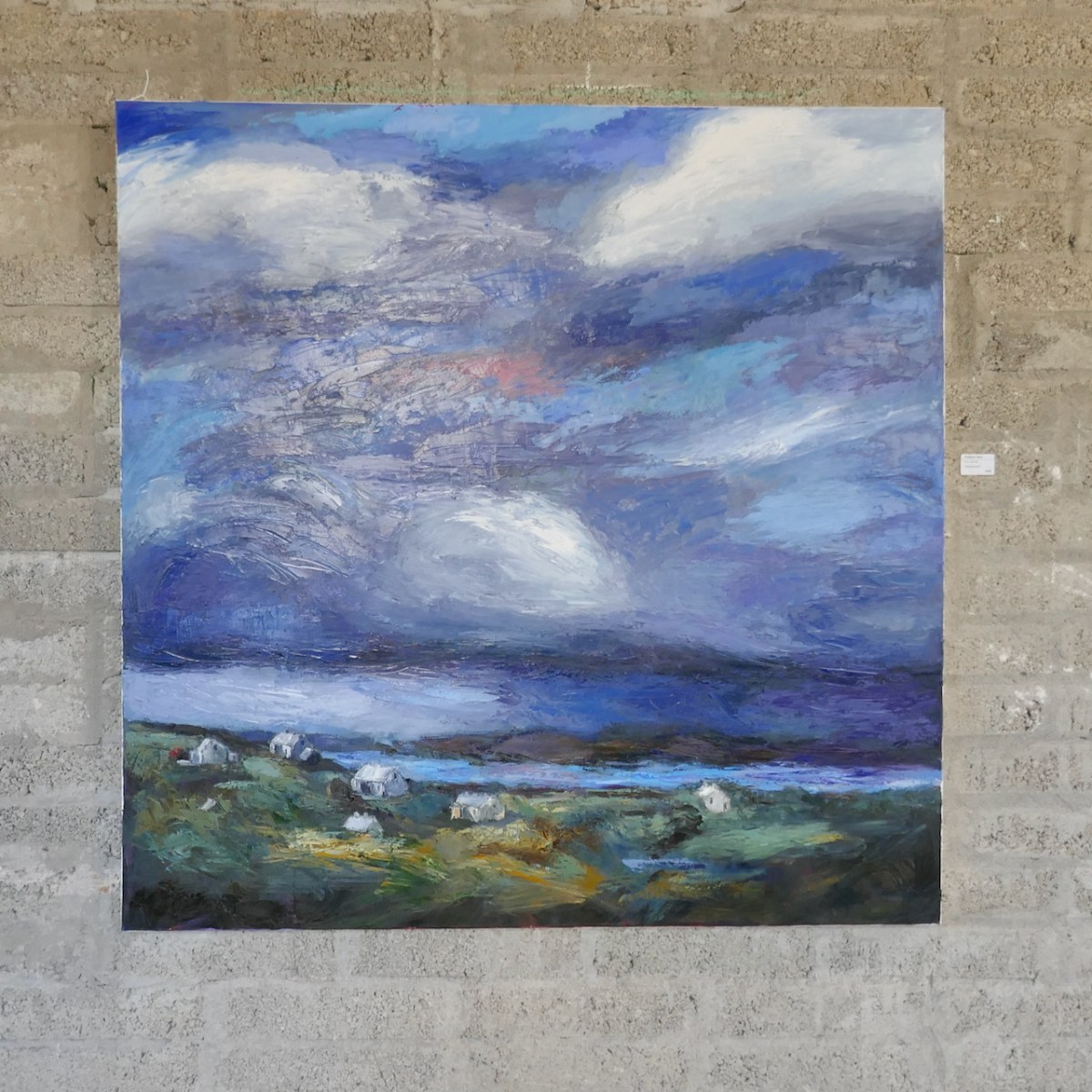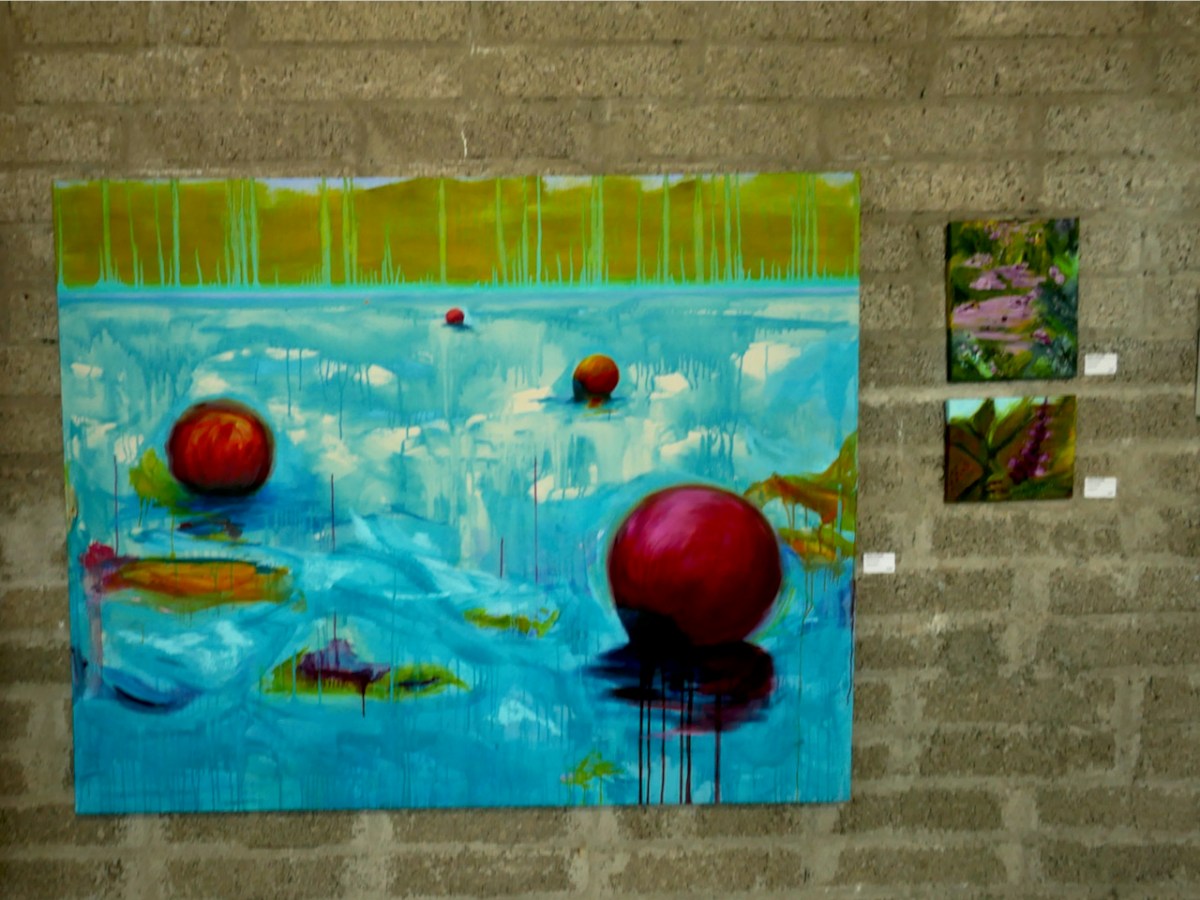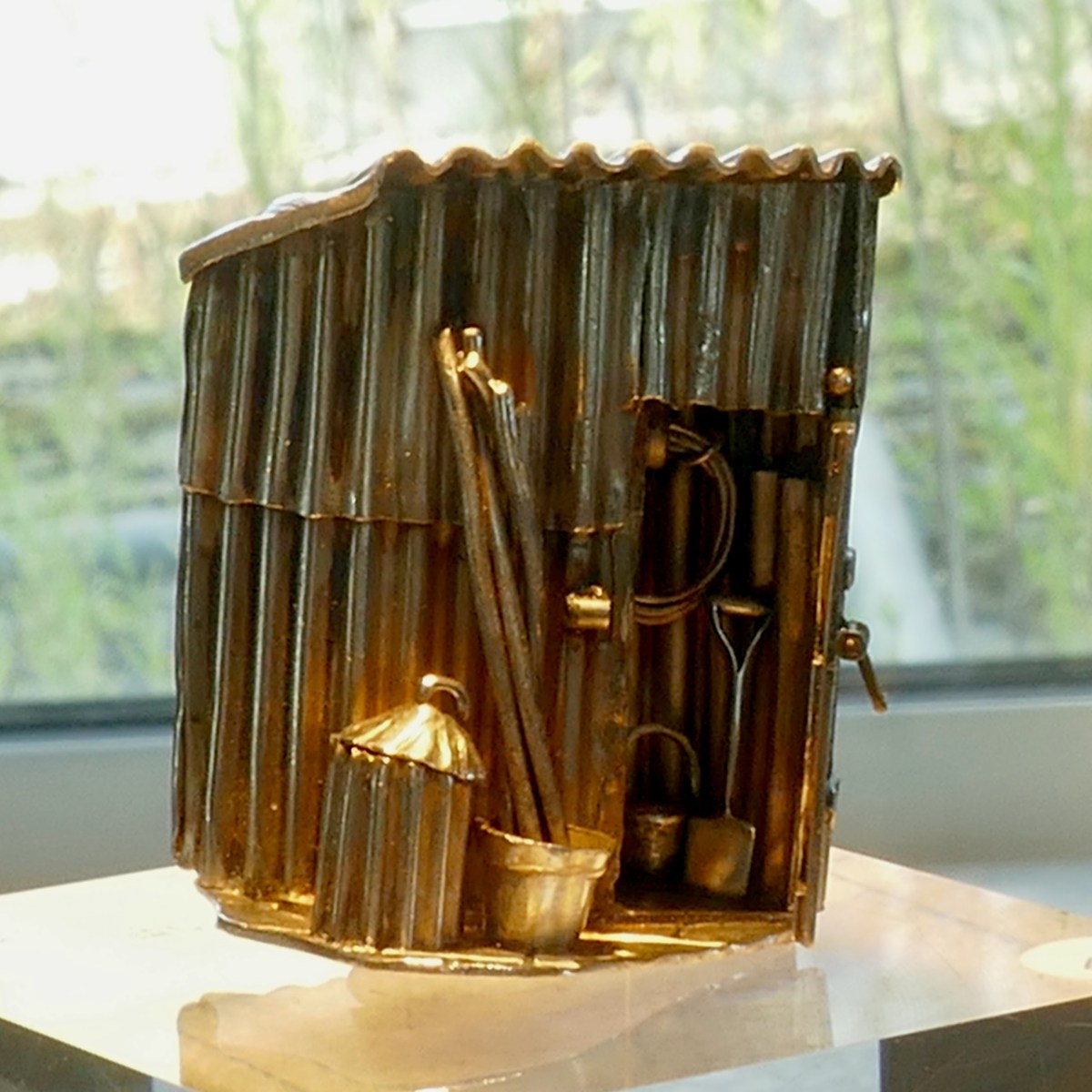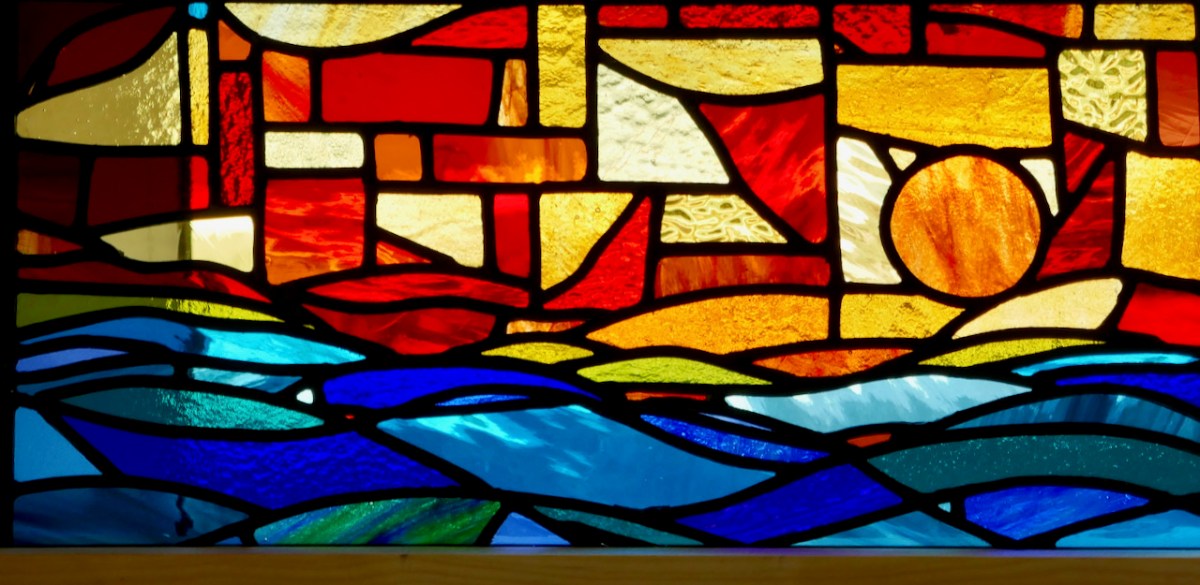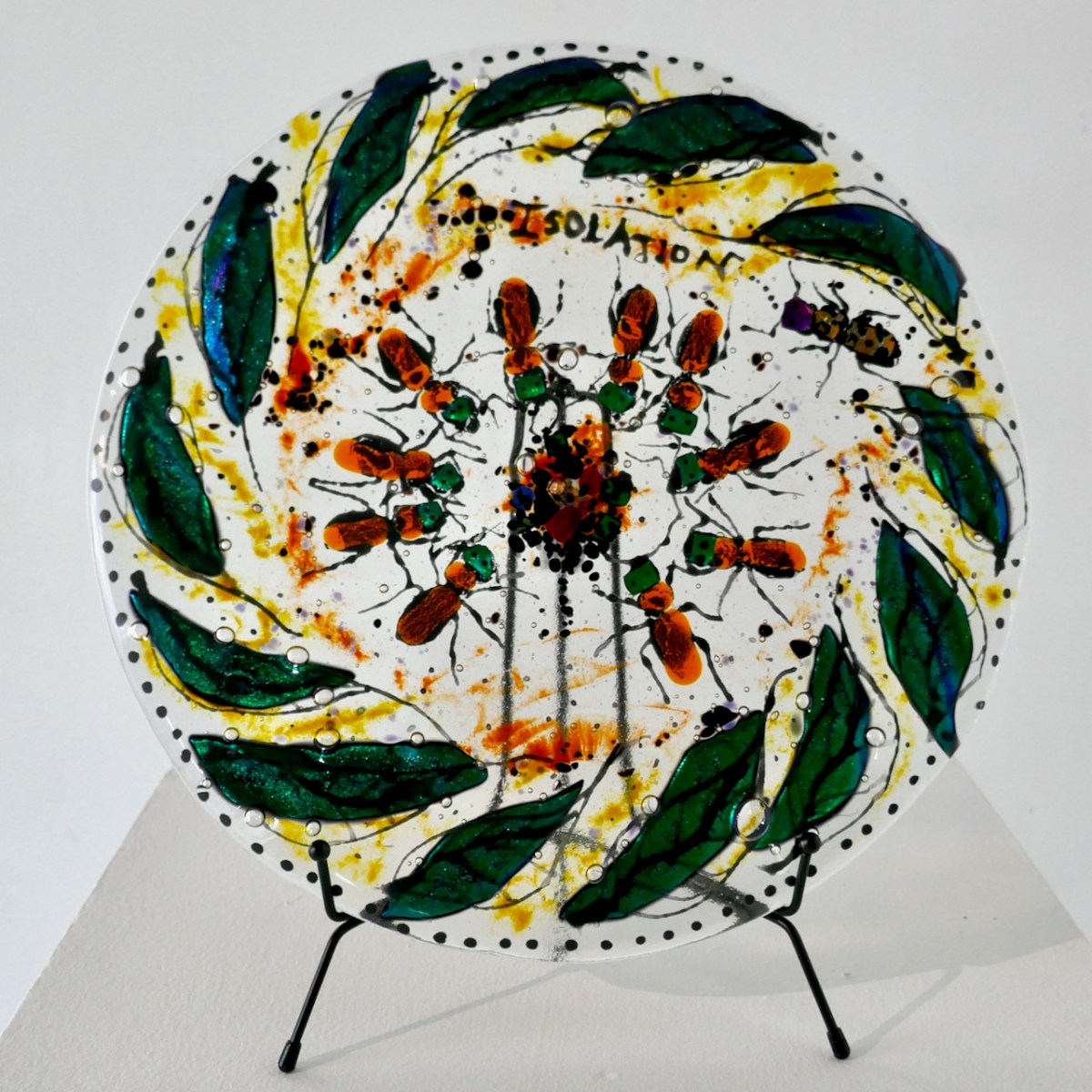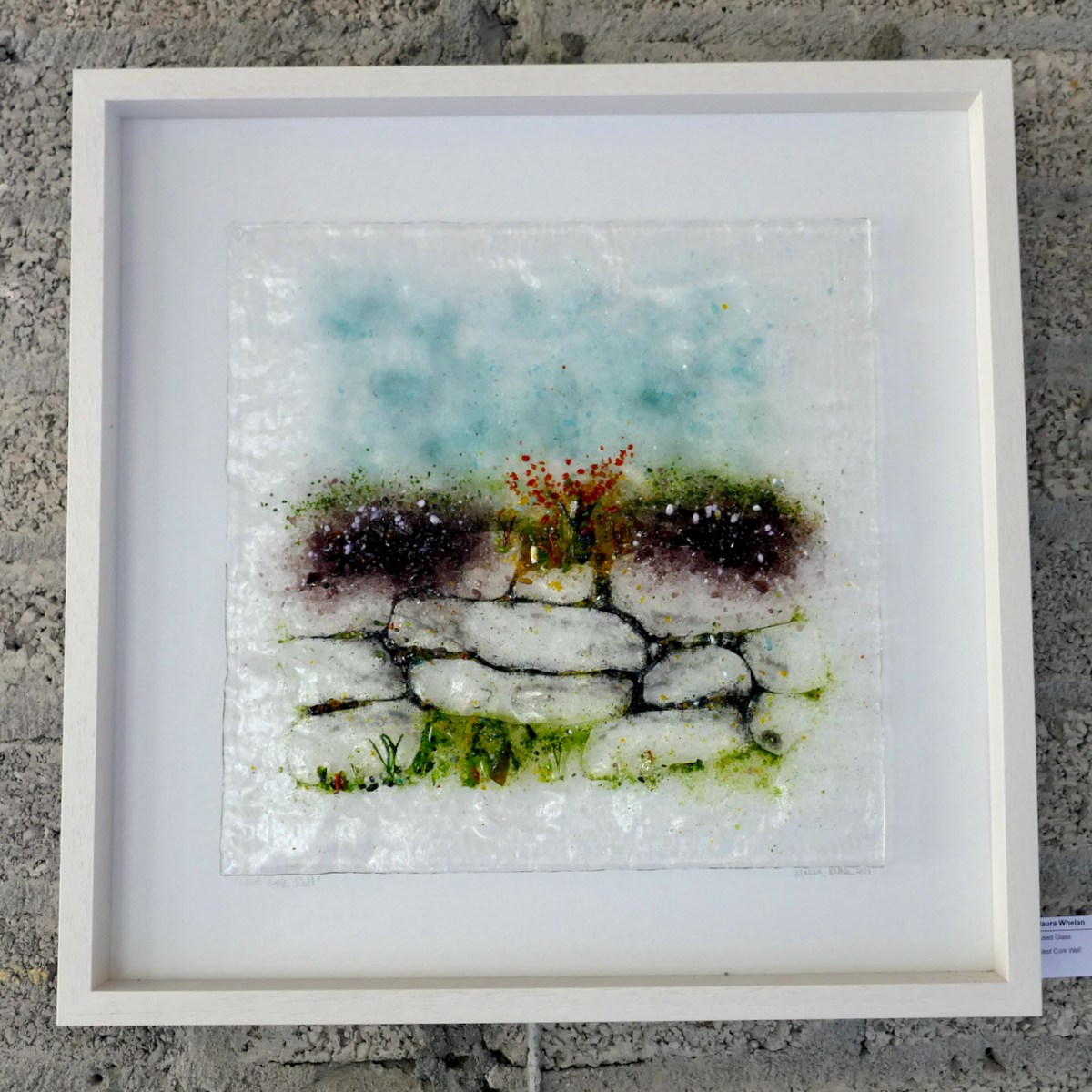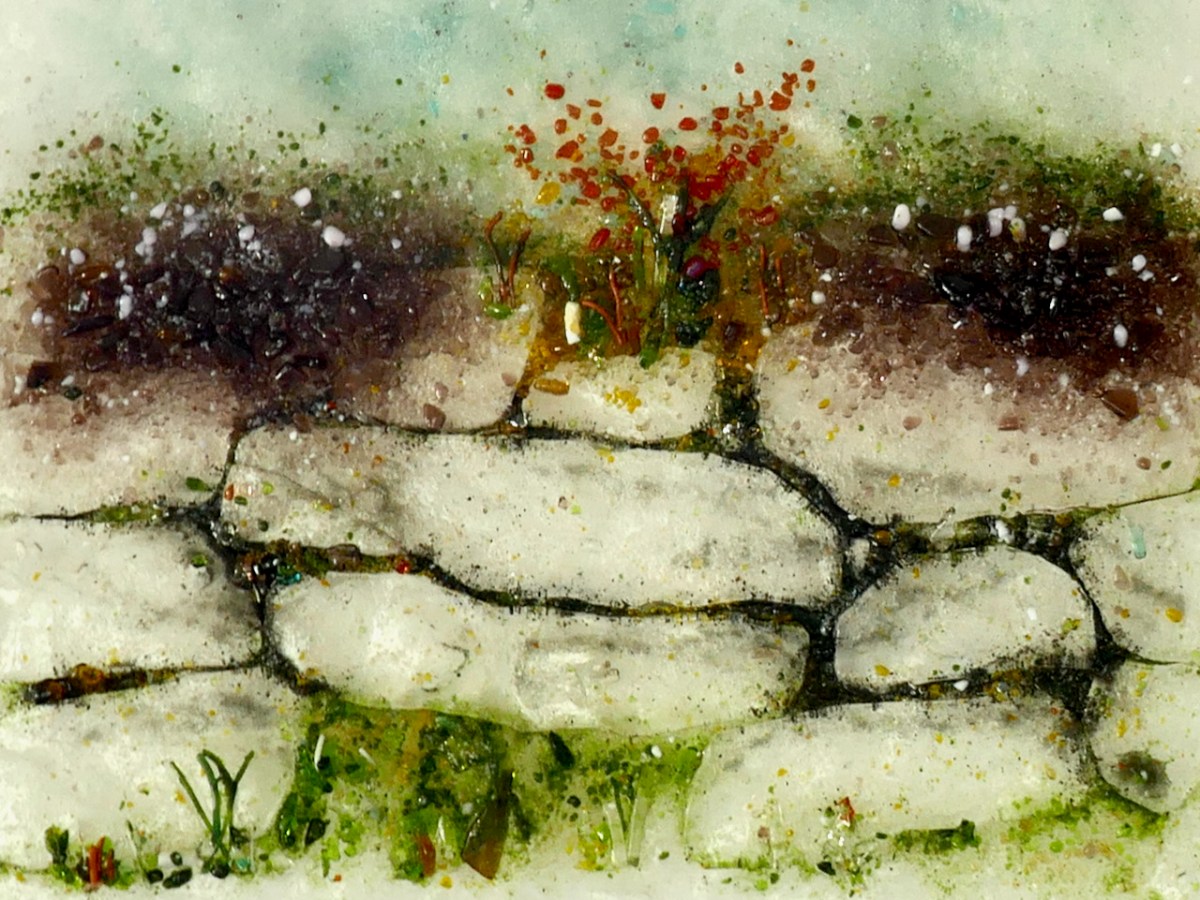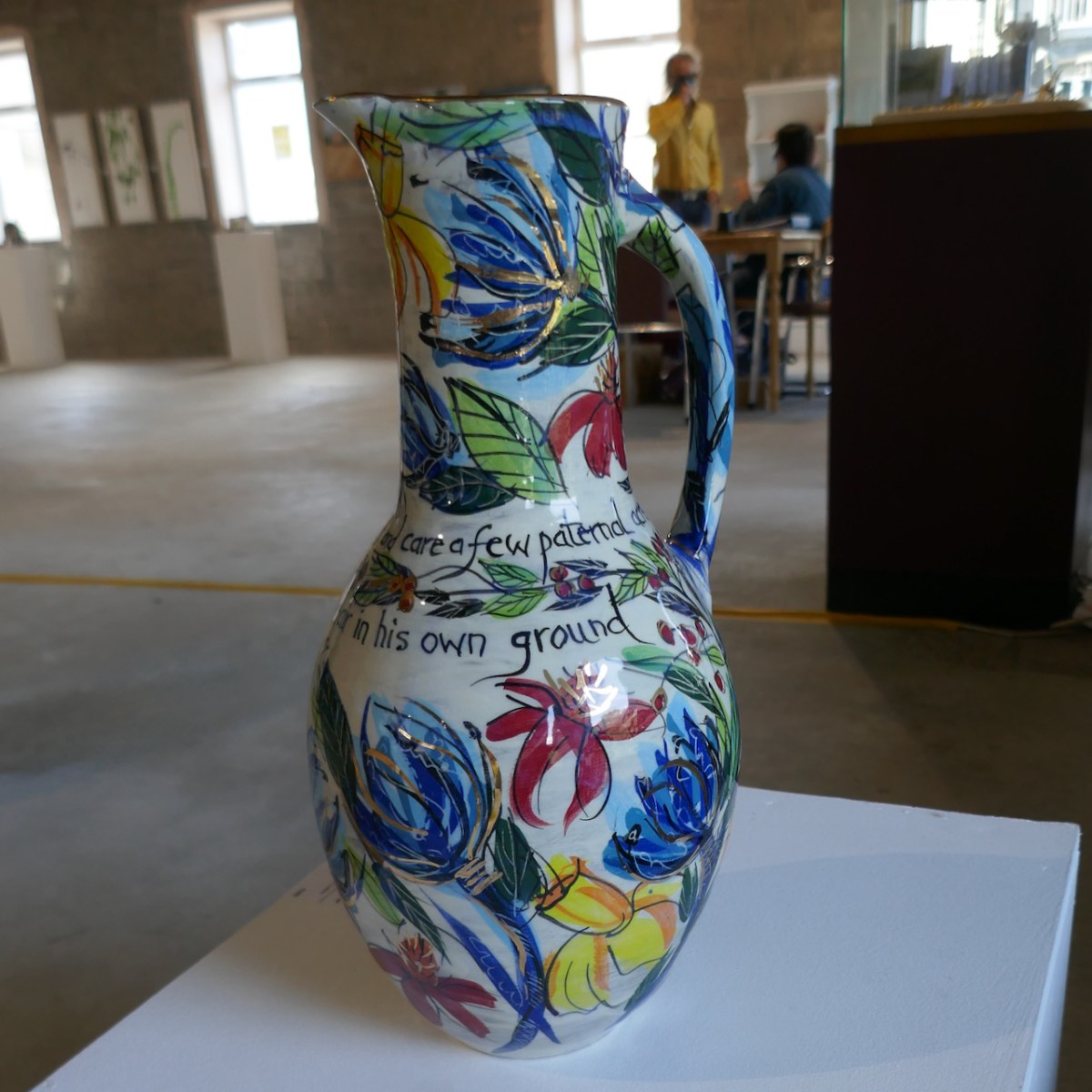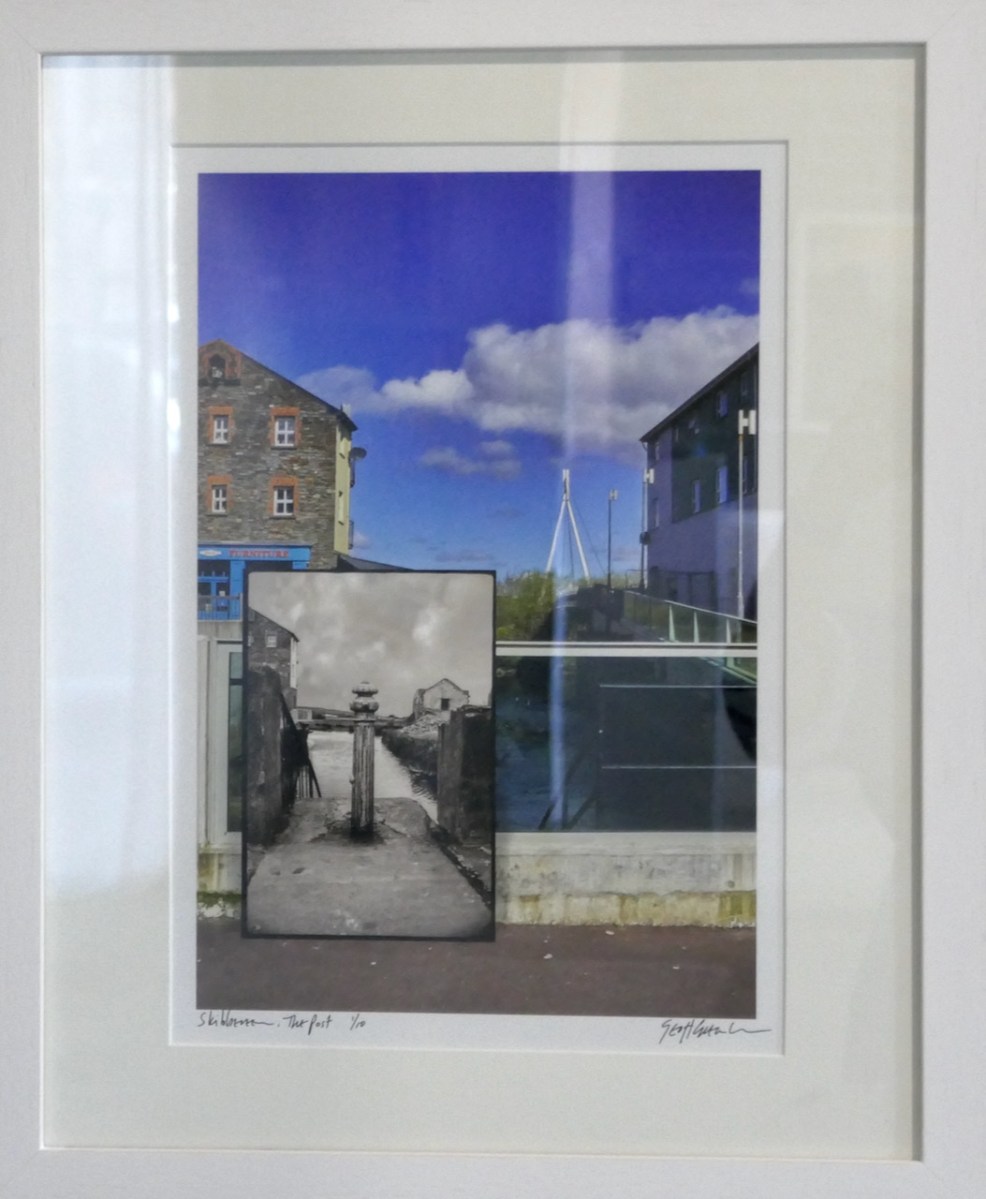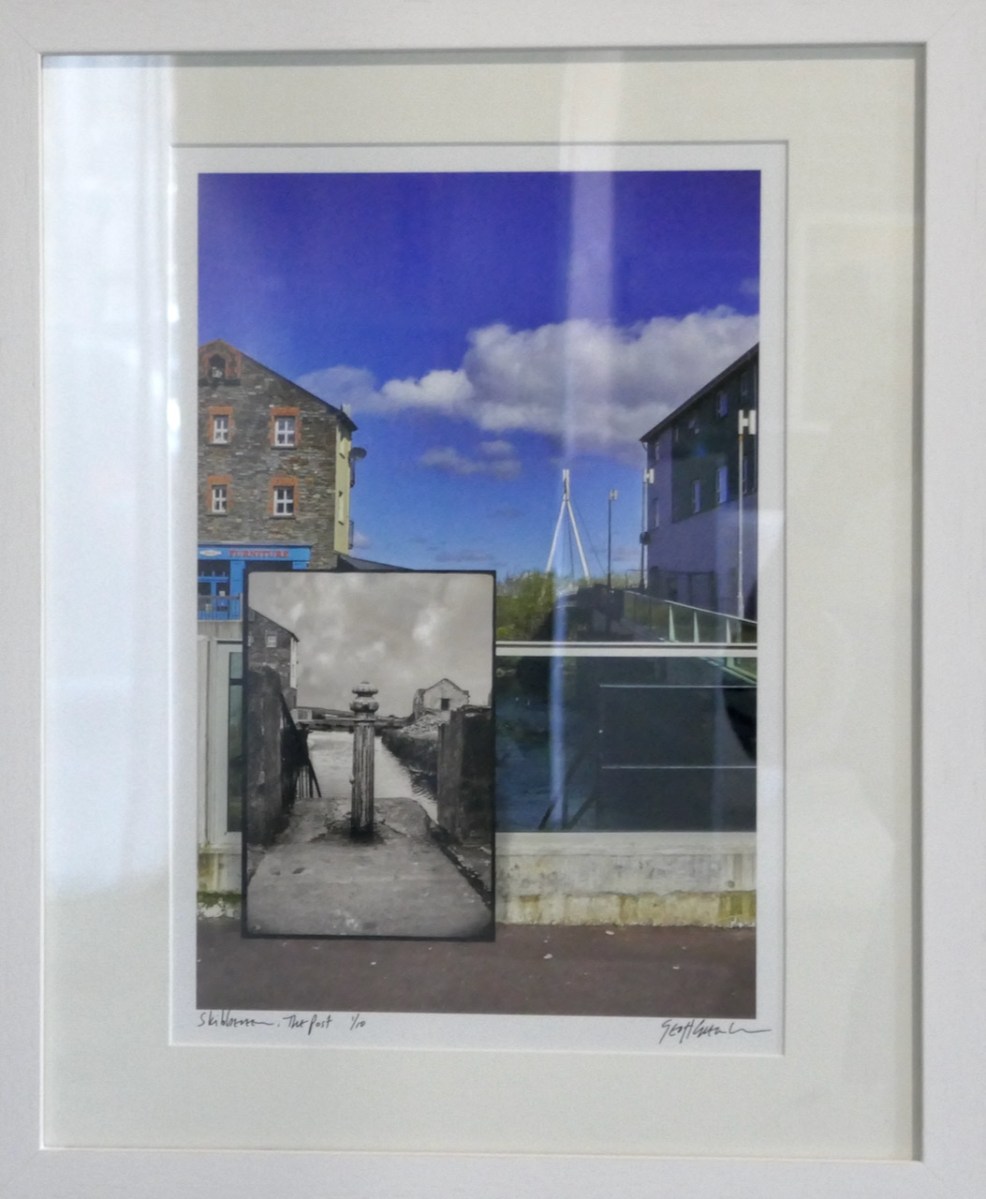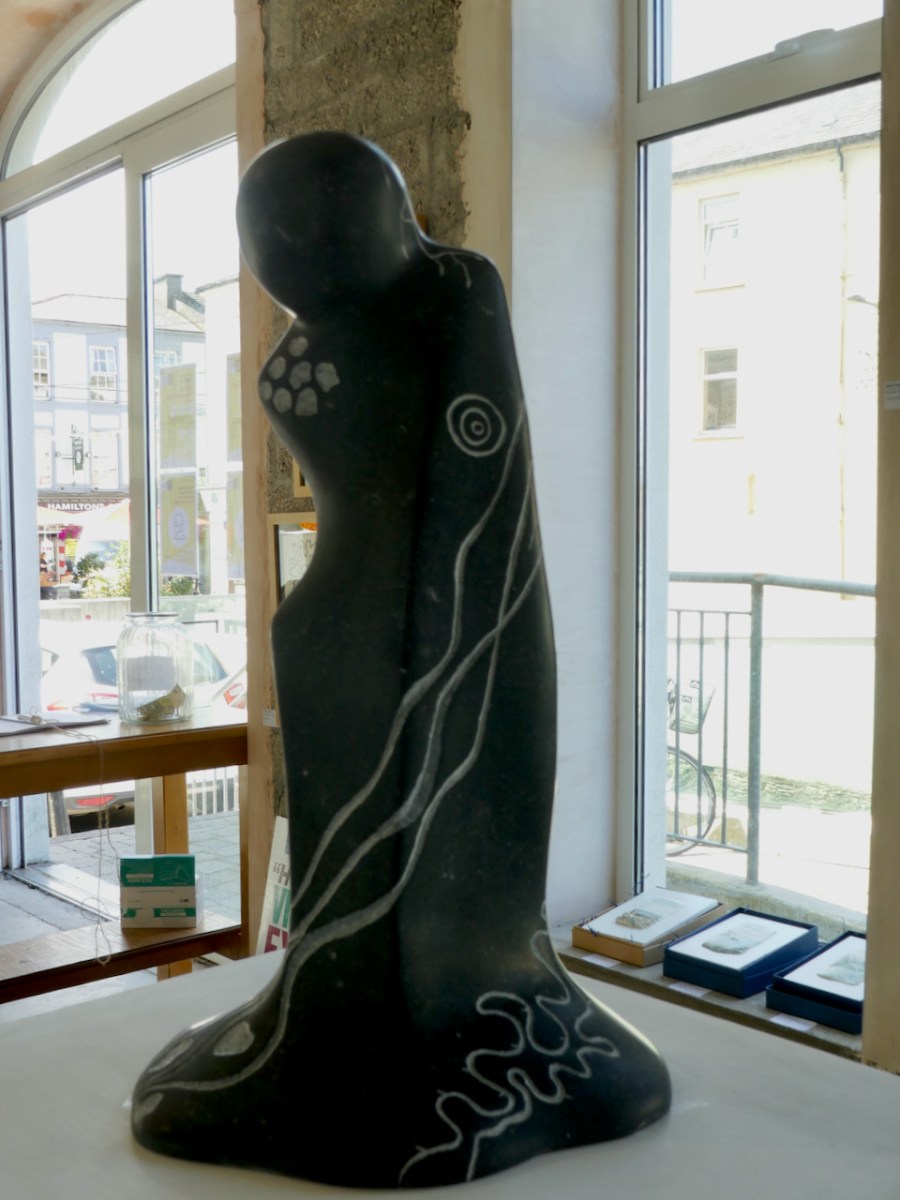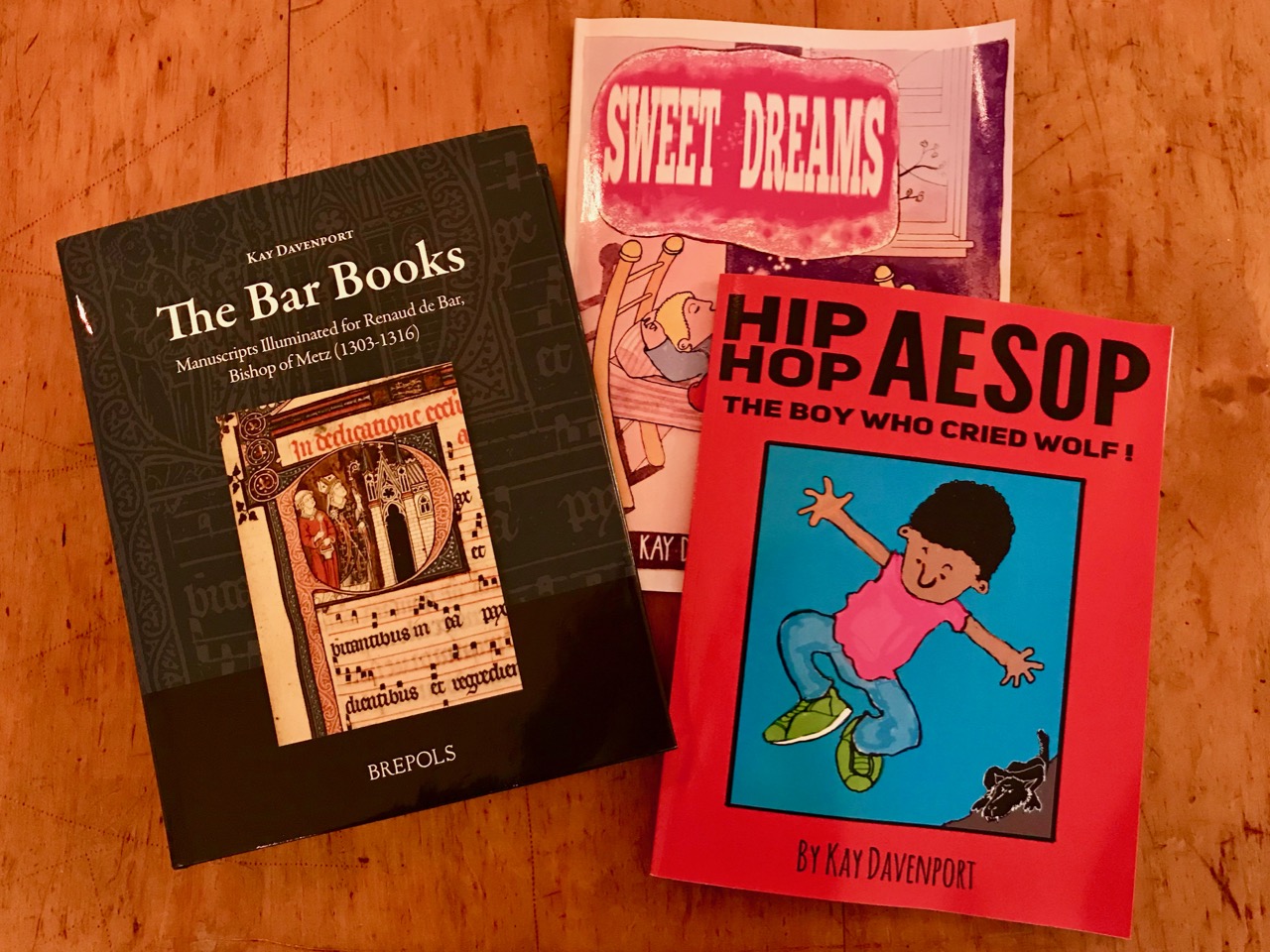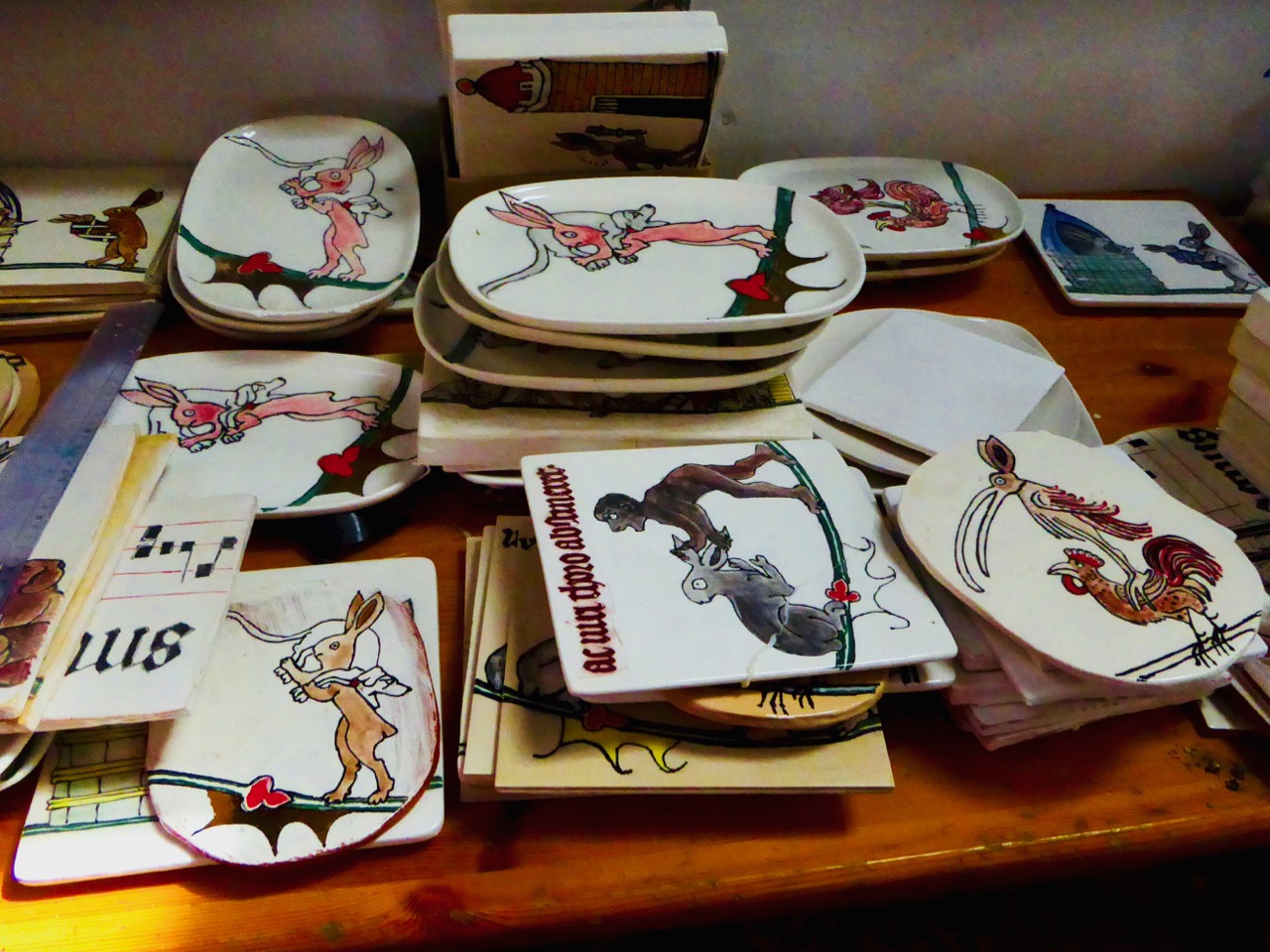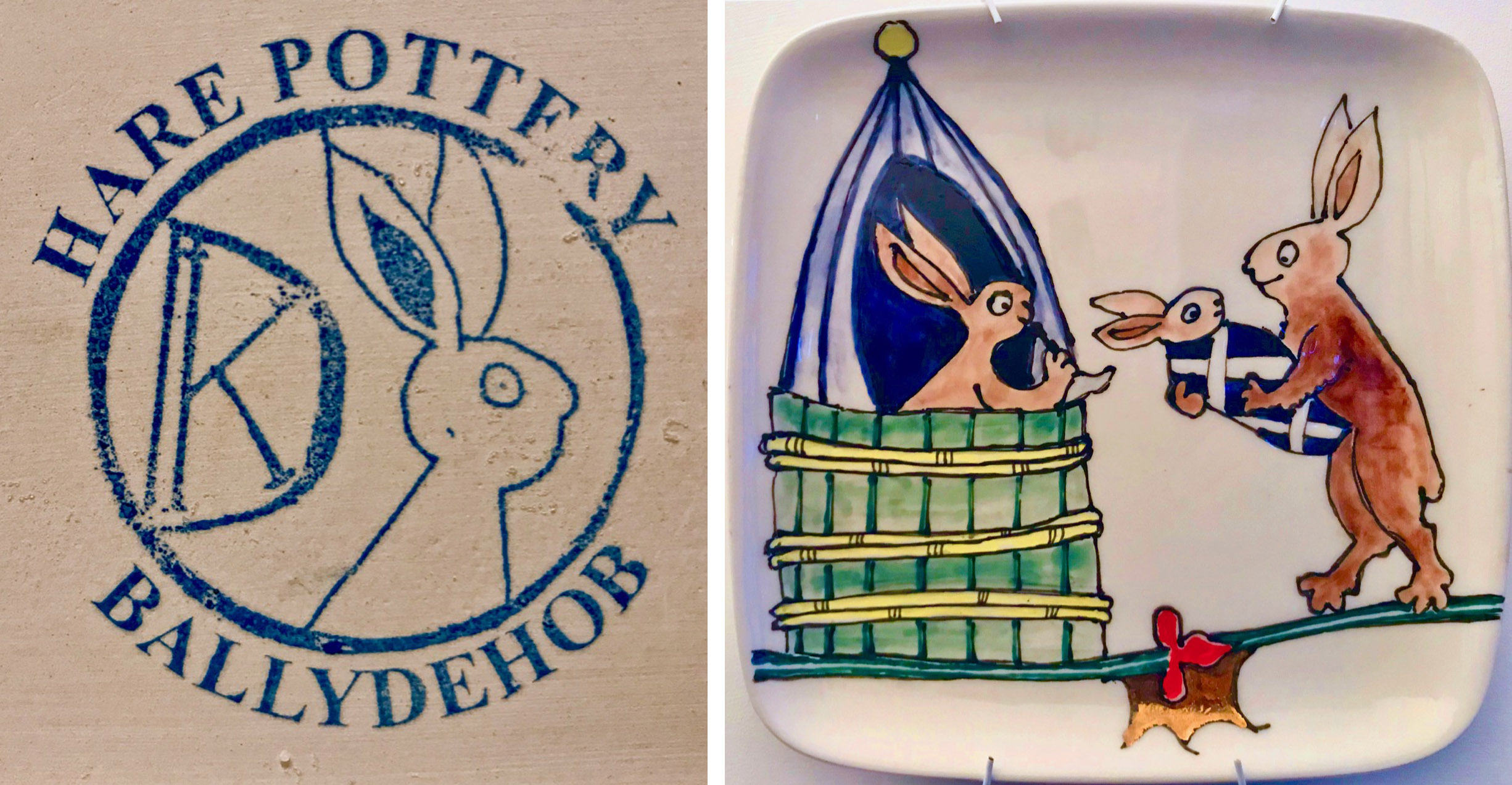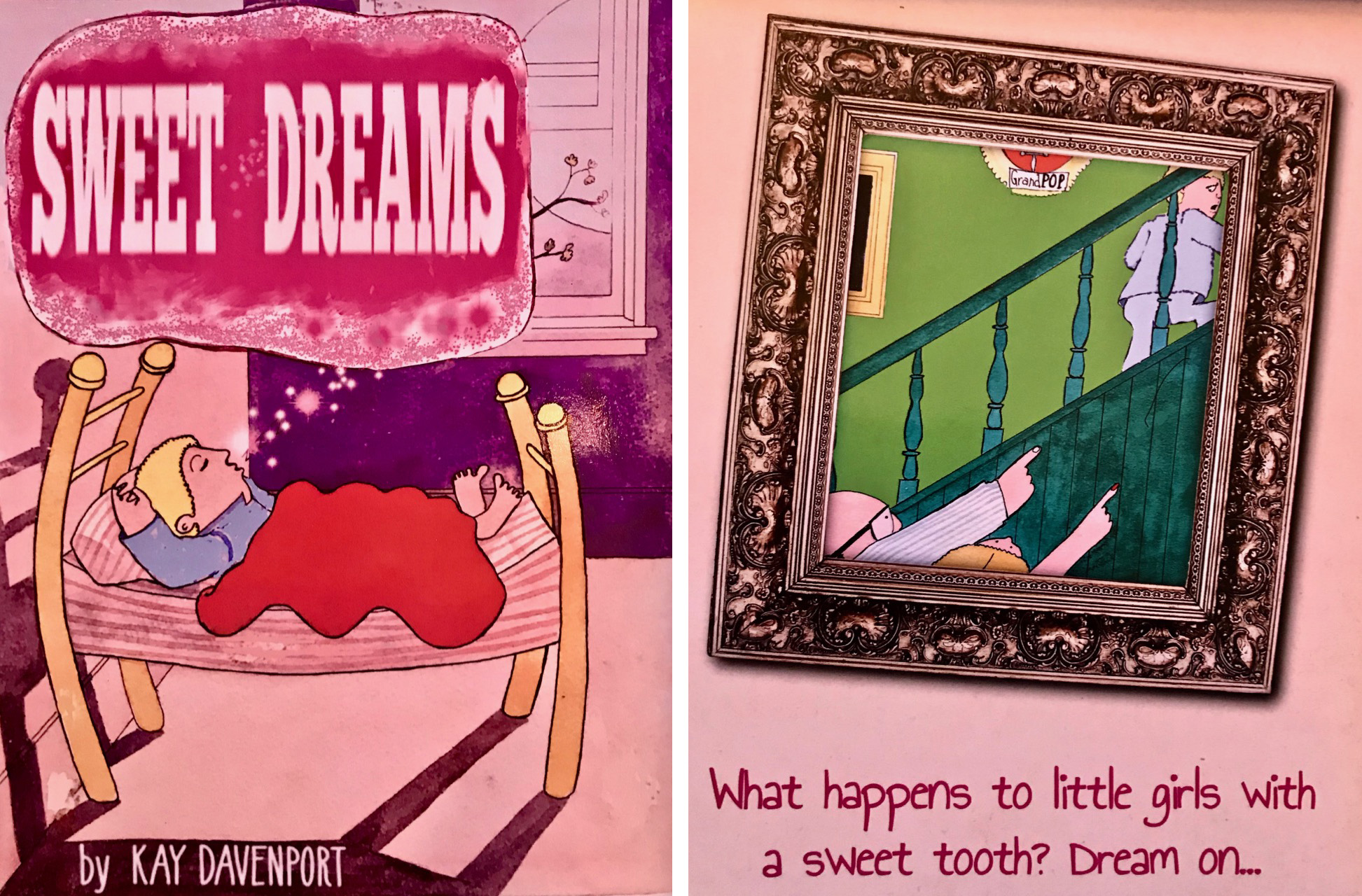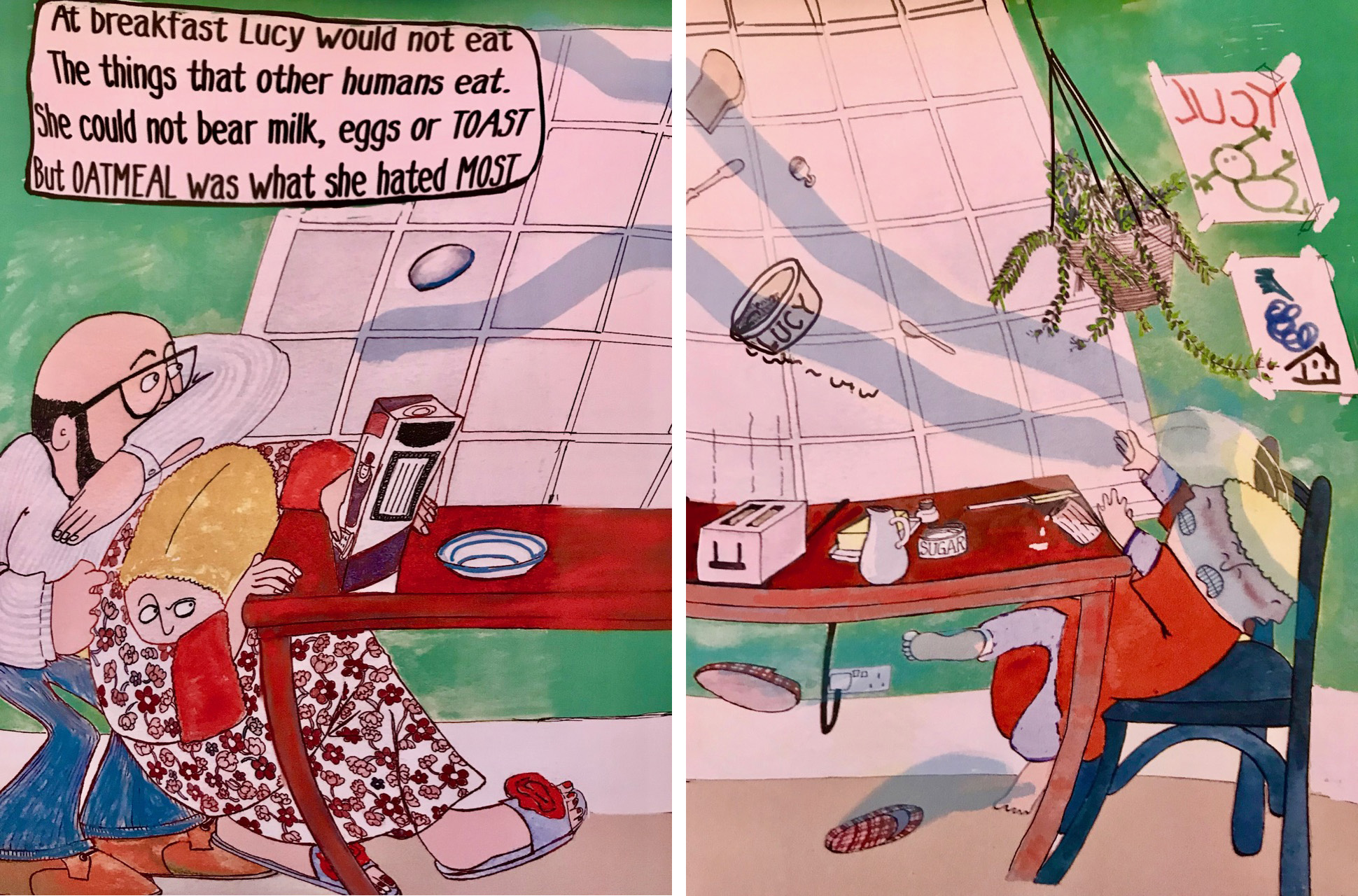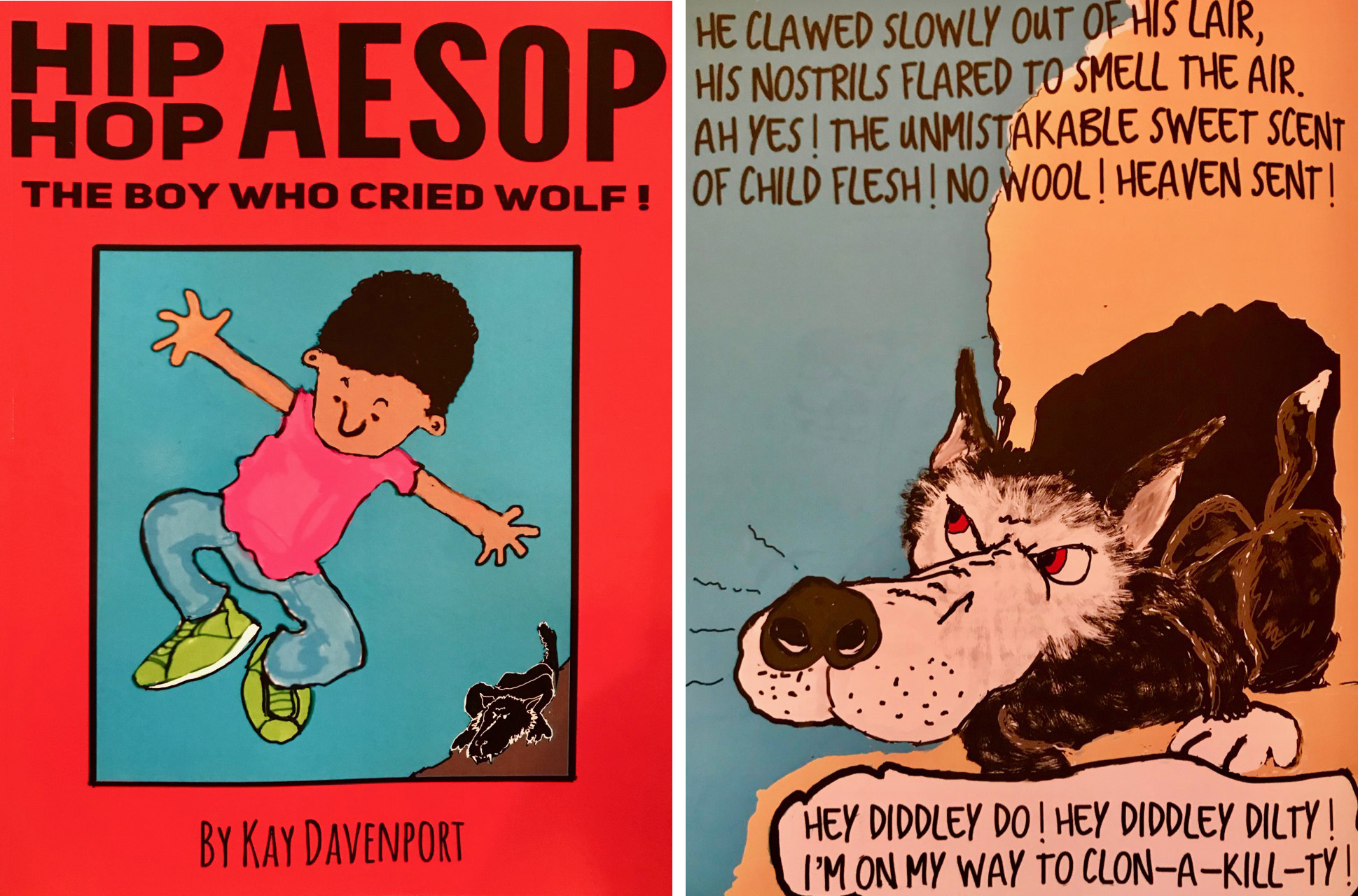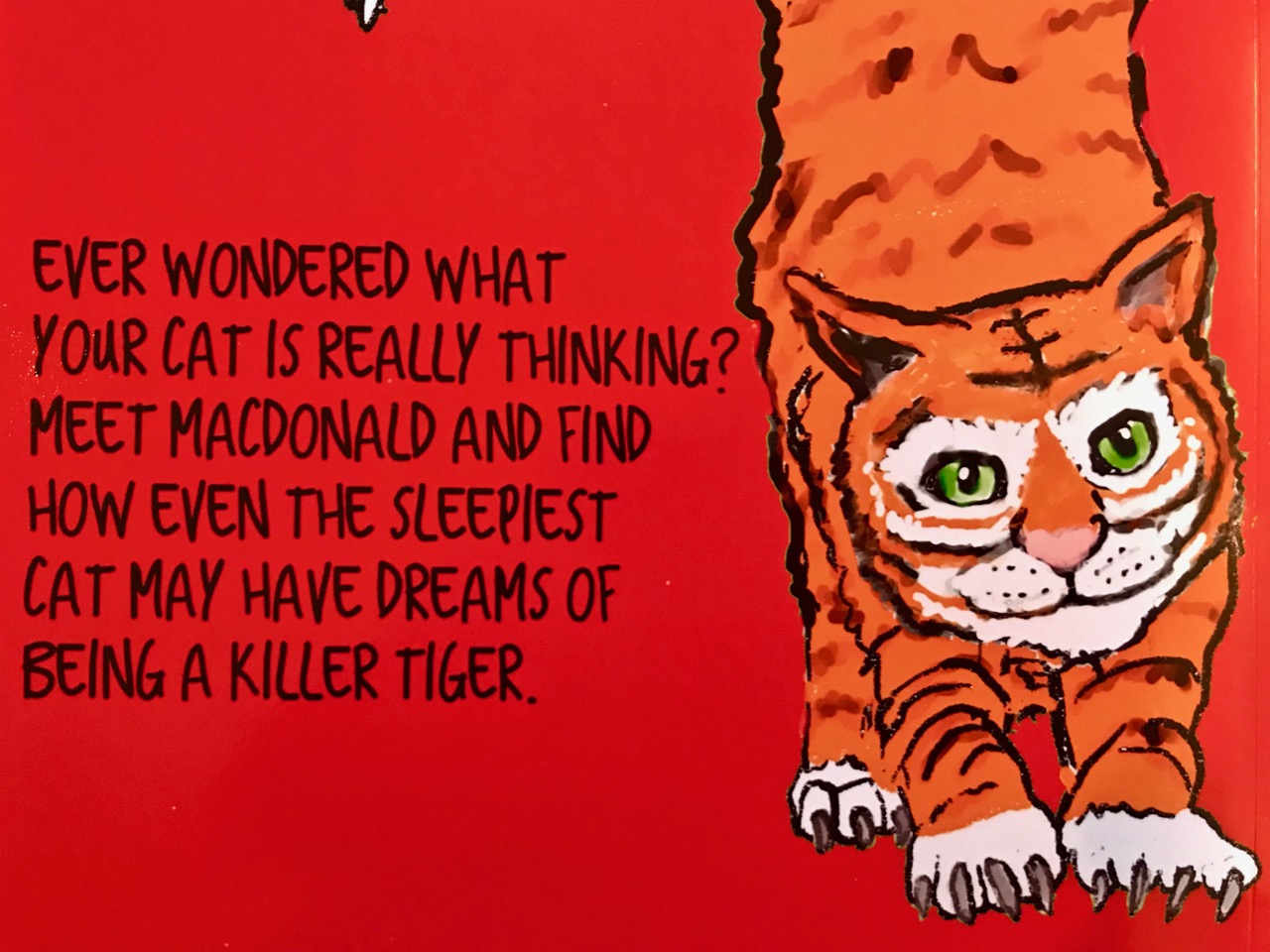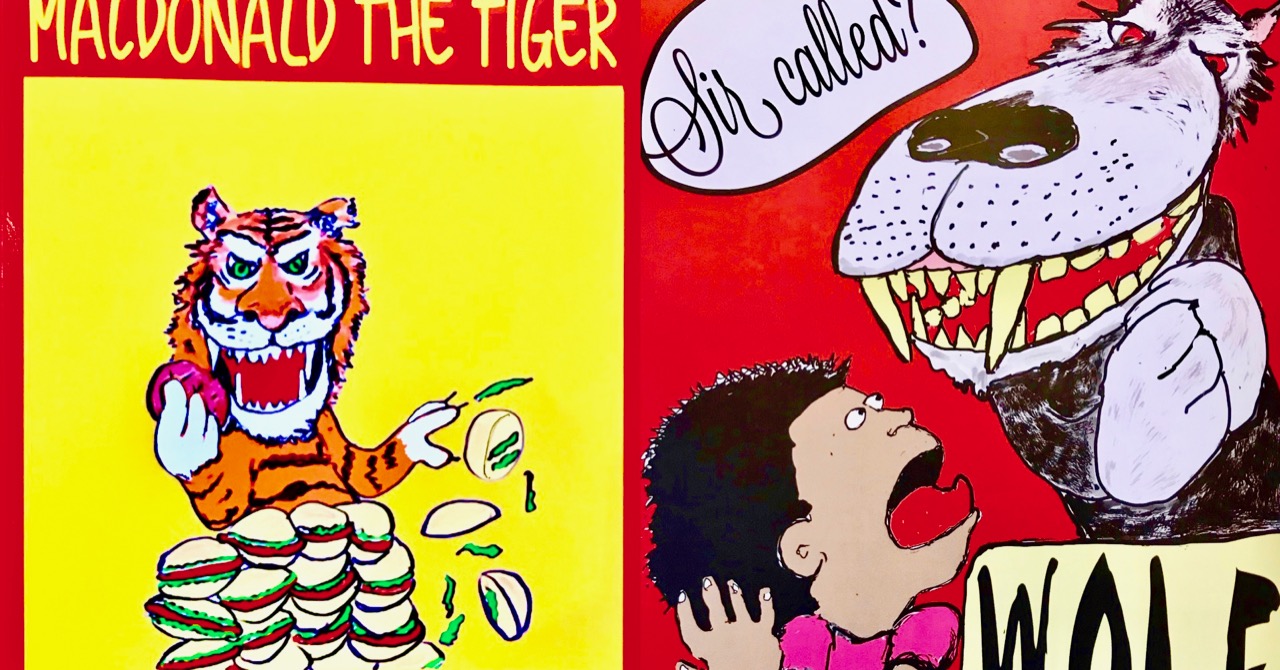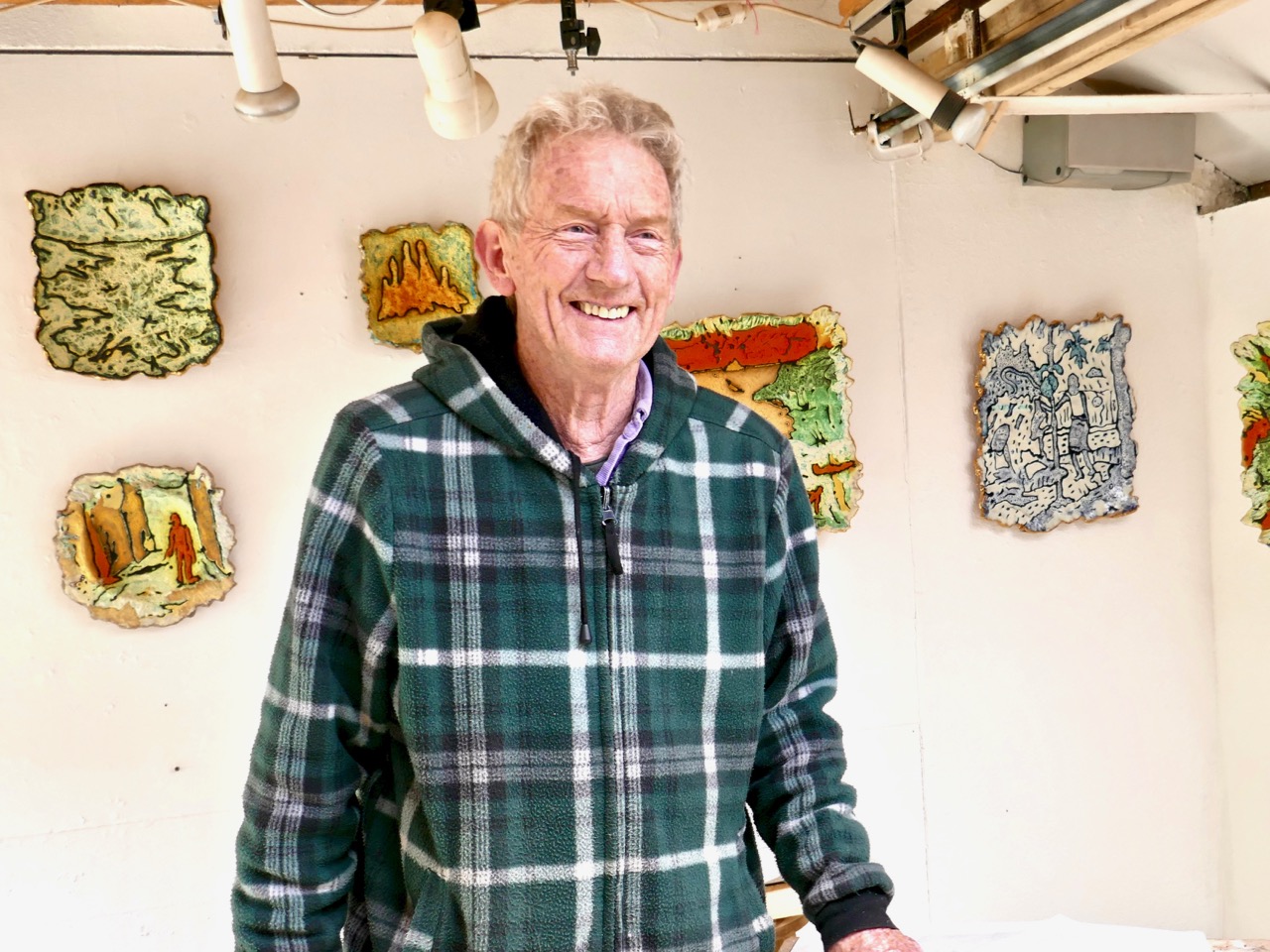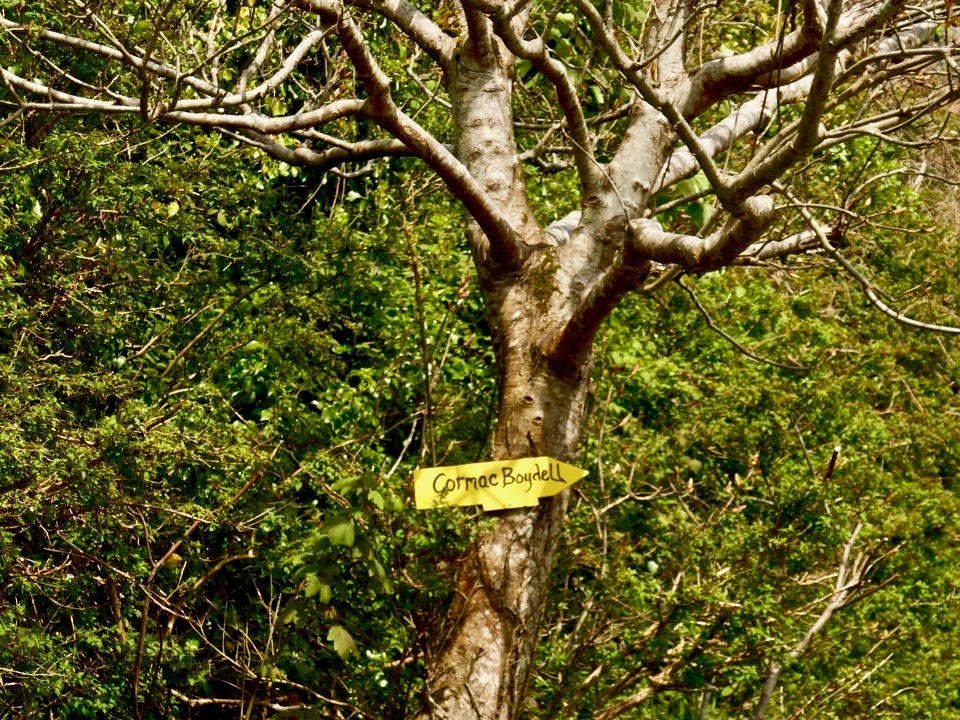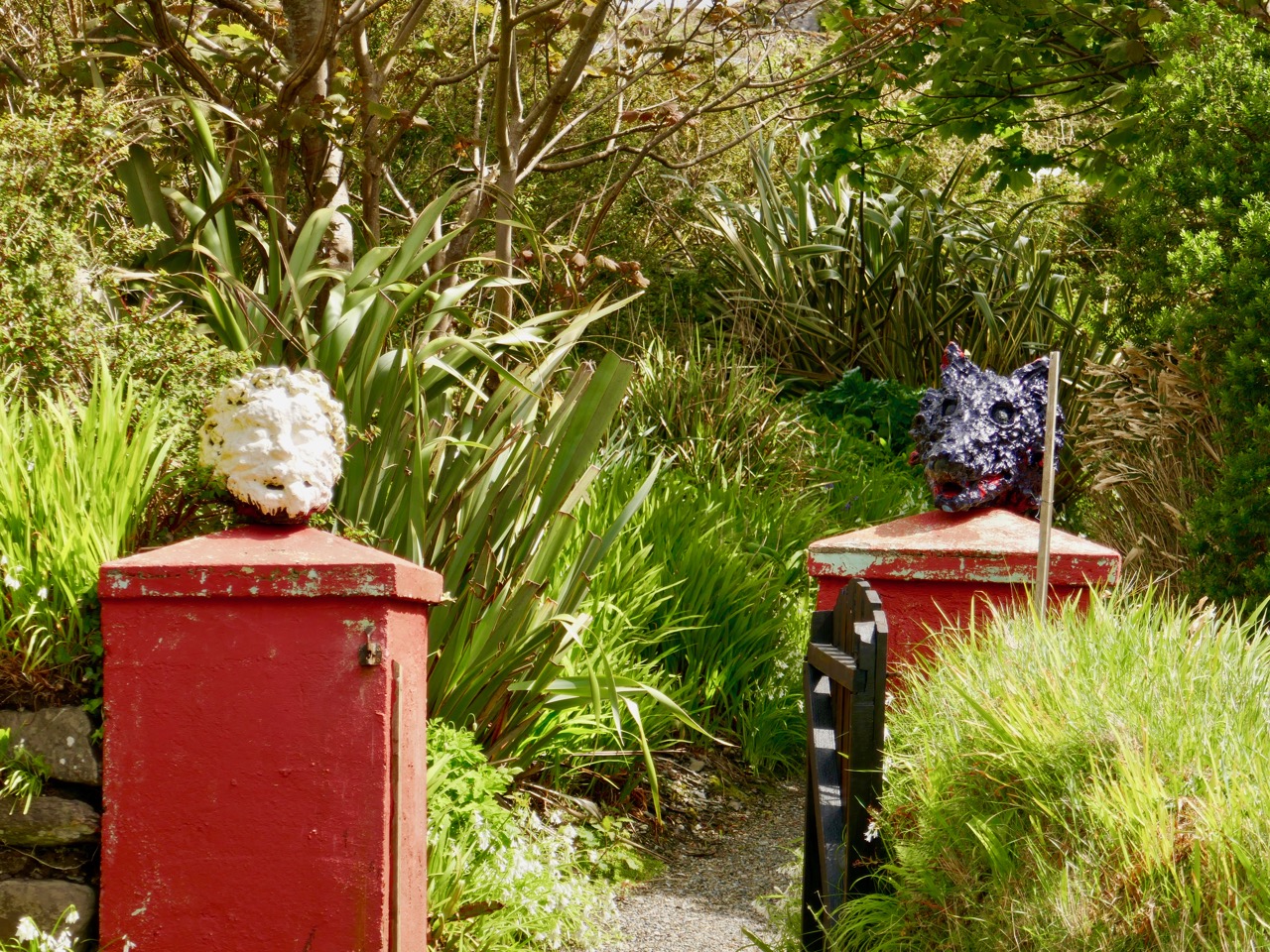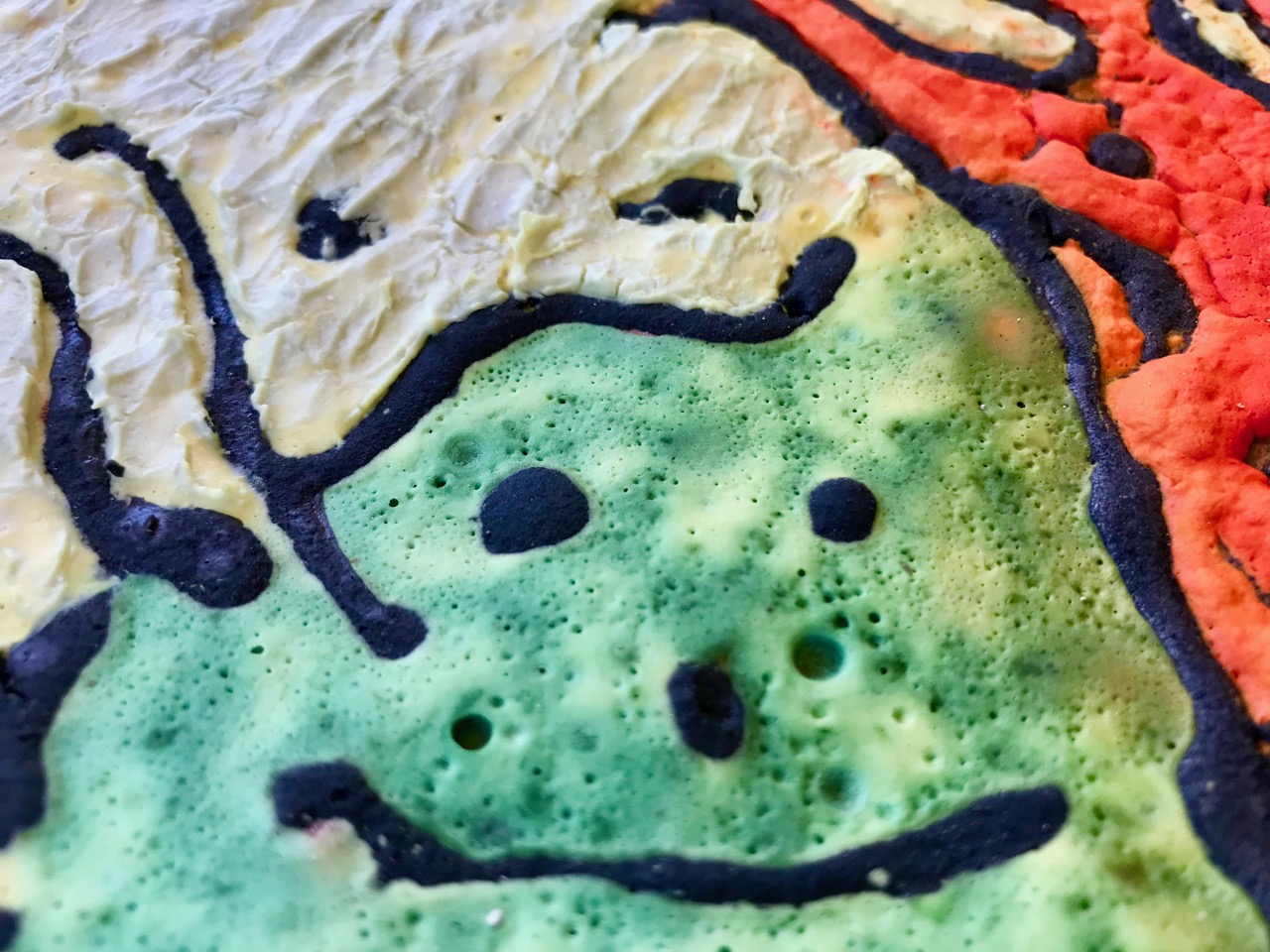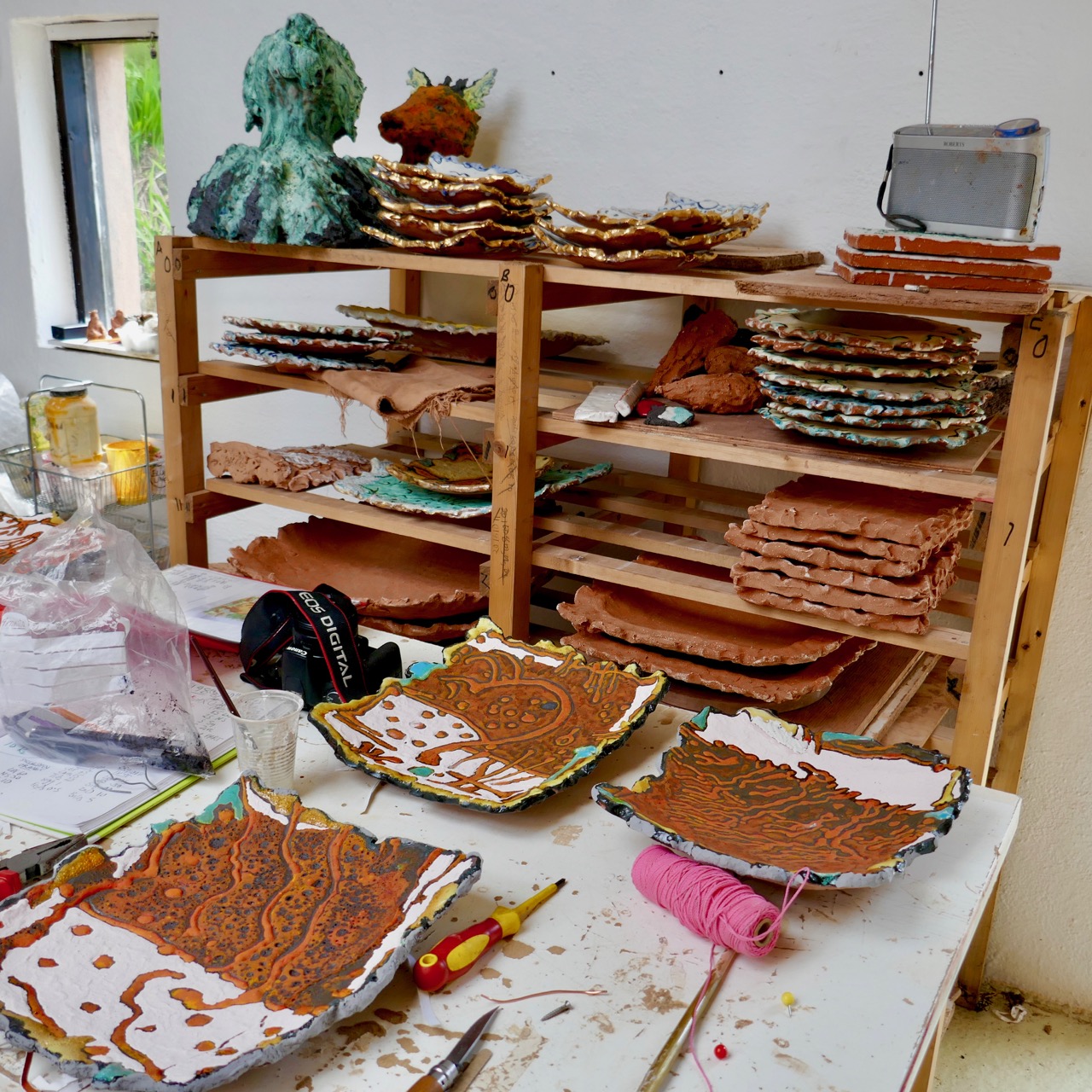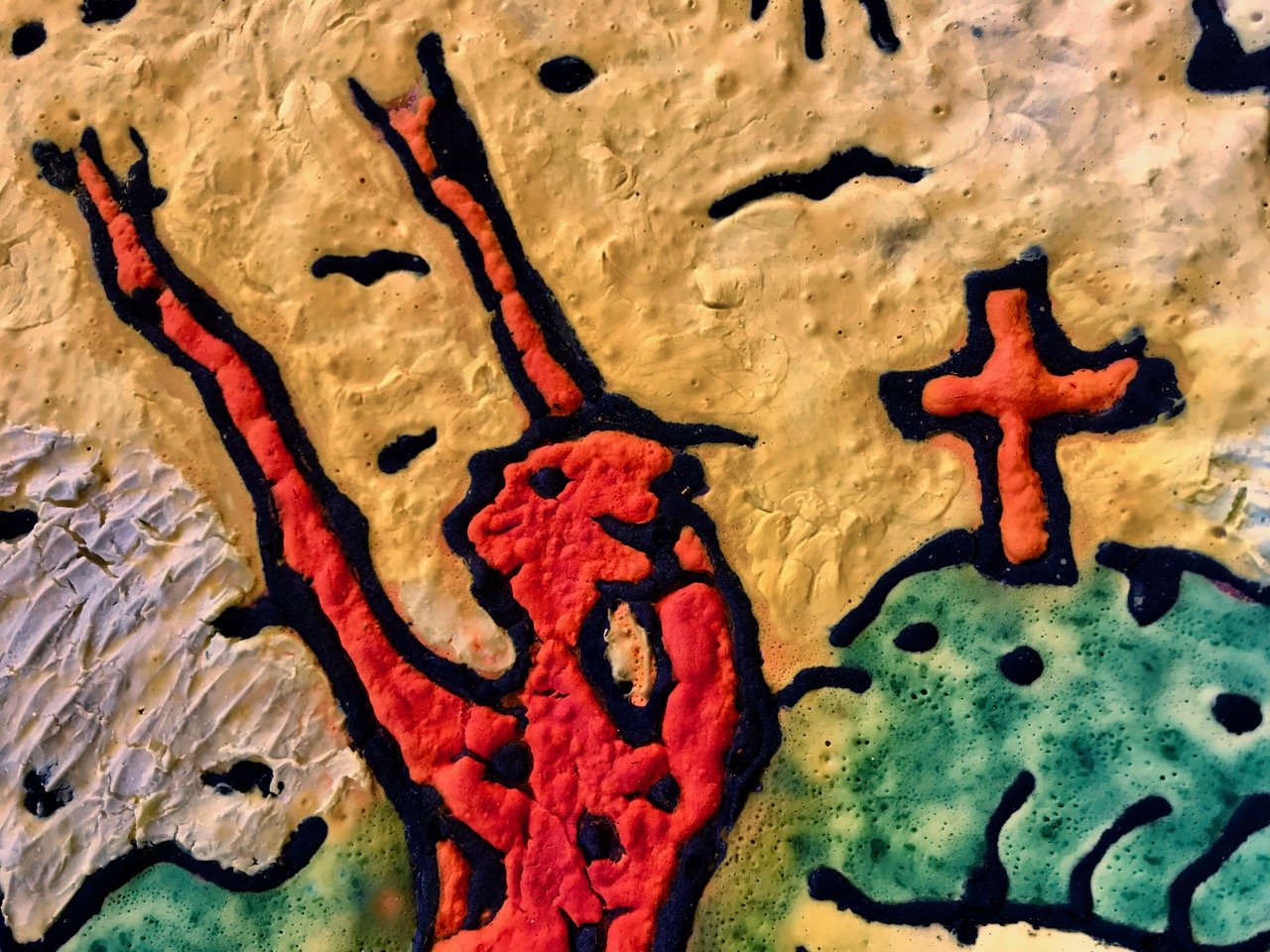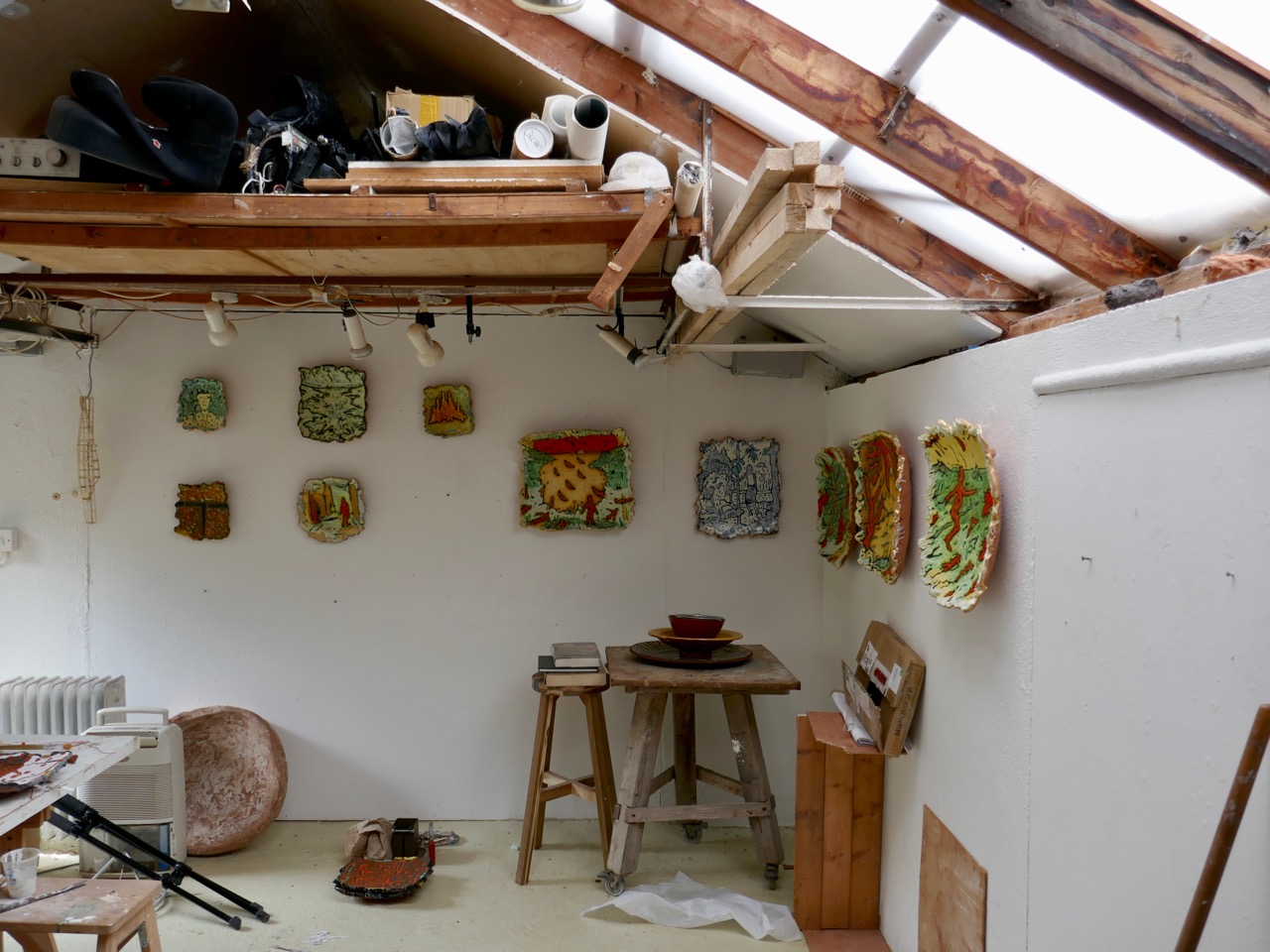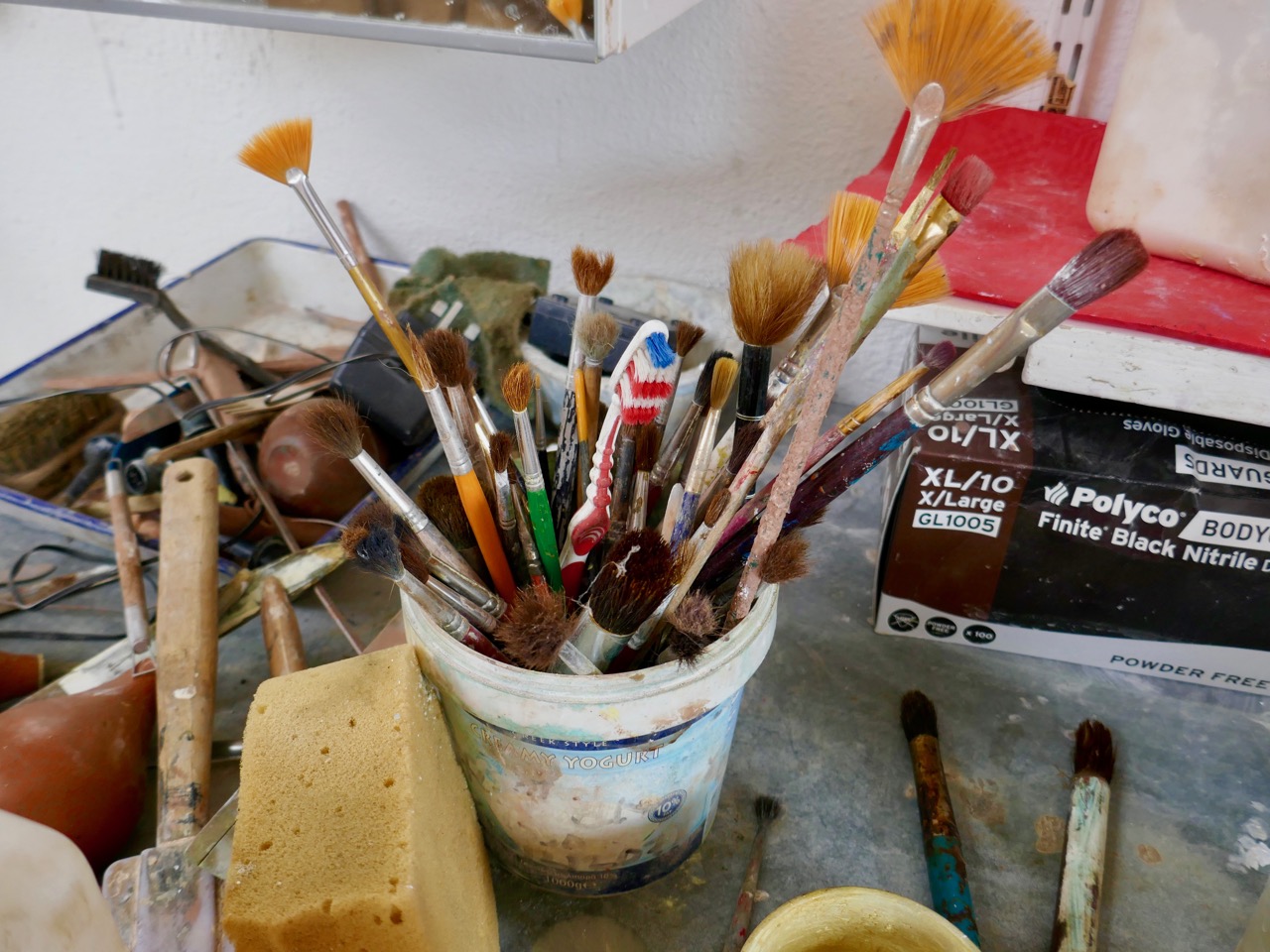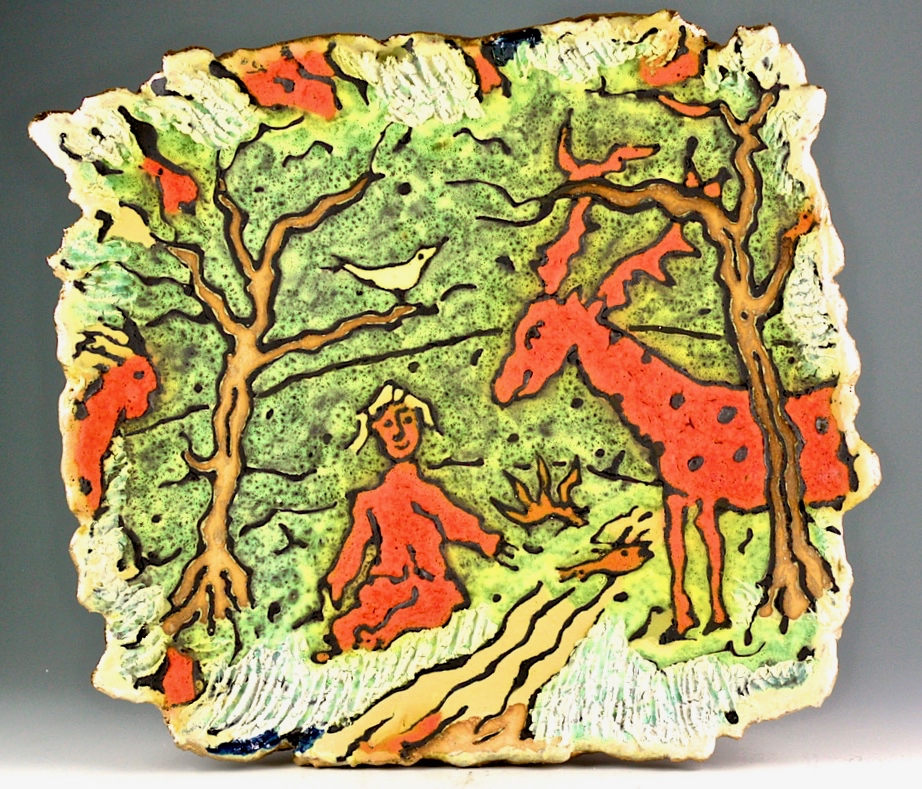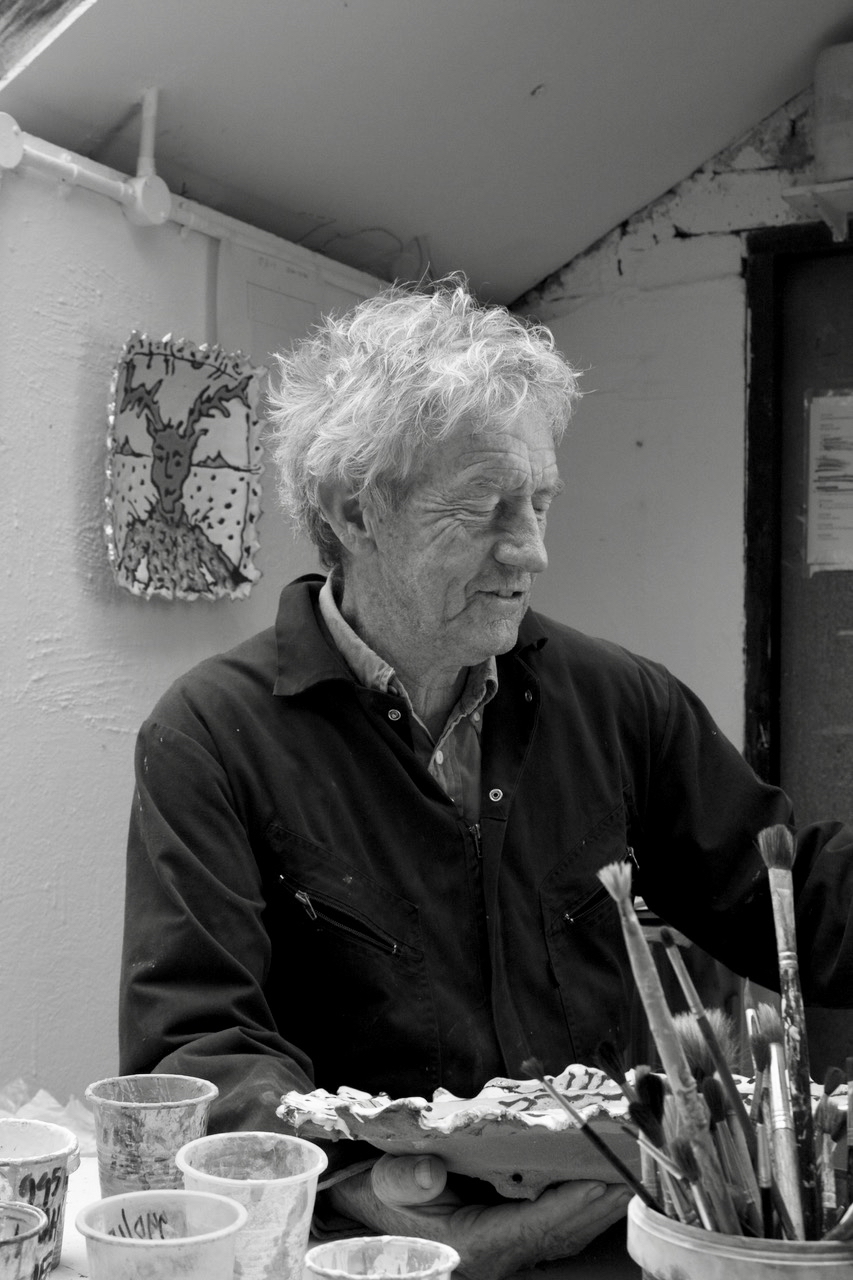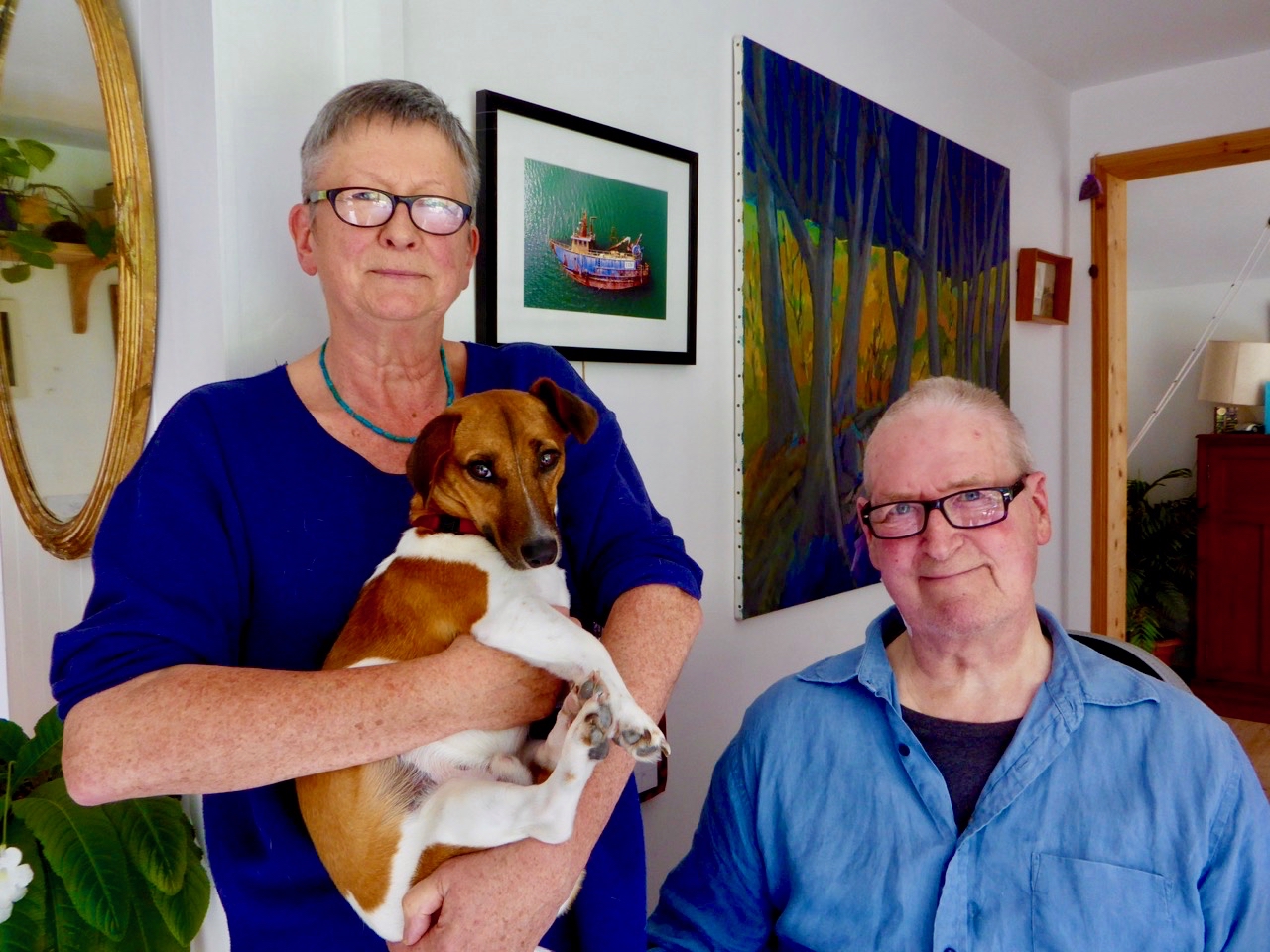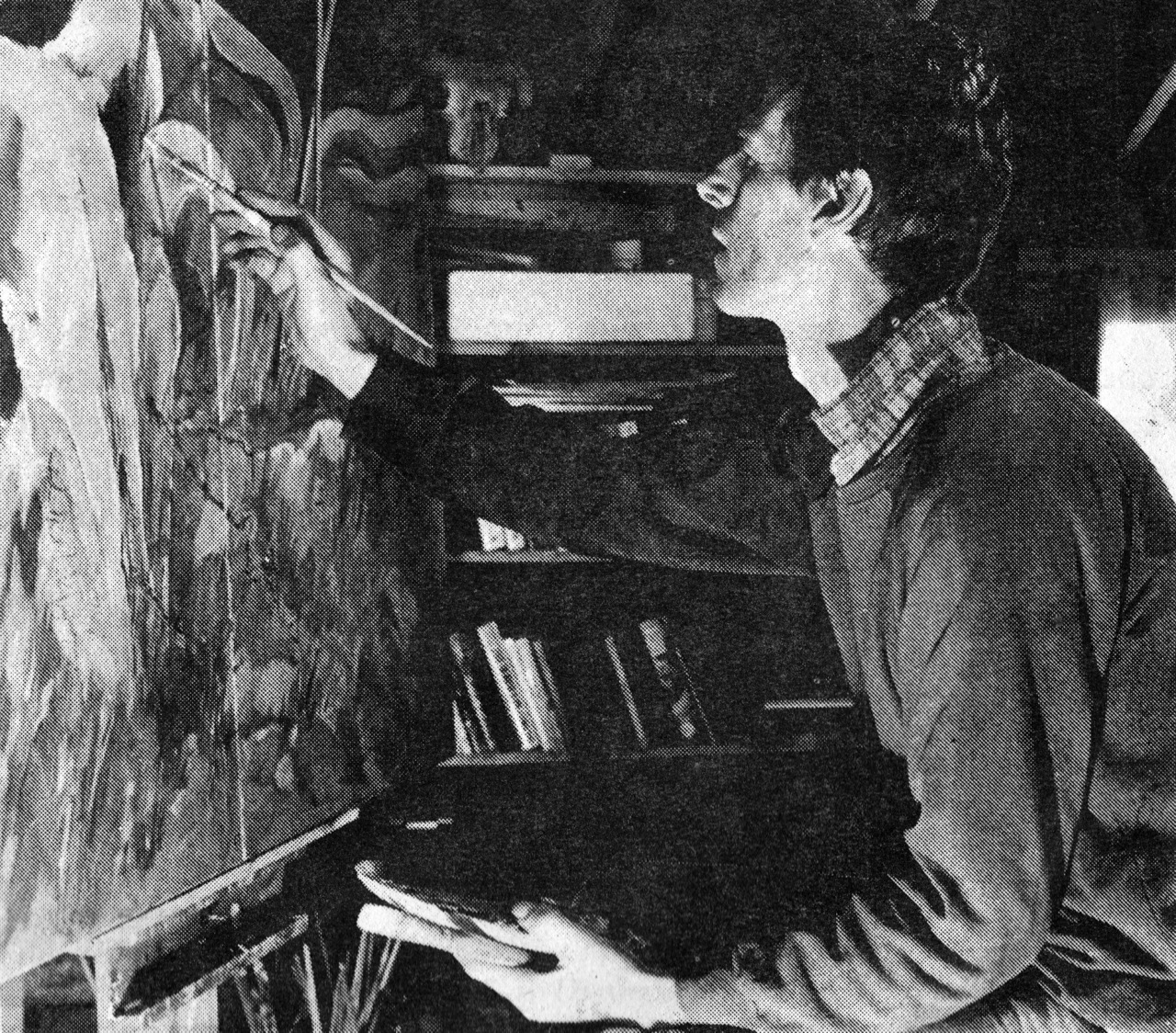
We were saddened to hear recently of the death of Leda May. Hers was a familiar face in Ballydehob, where she lived for many decades. Her little pottery studio on The Parade has always been a landmark in the village:

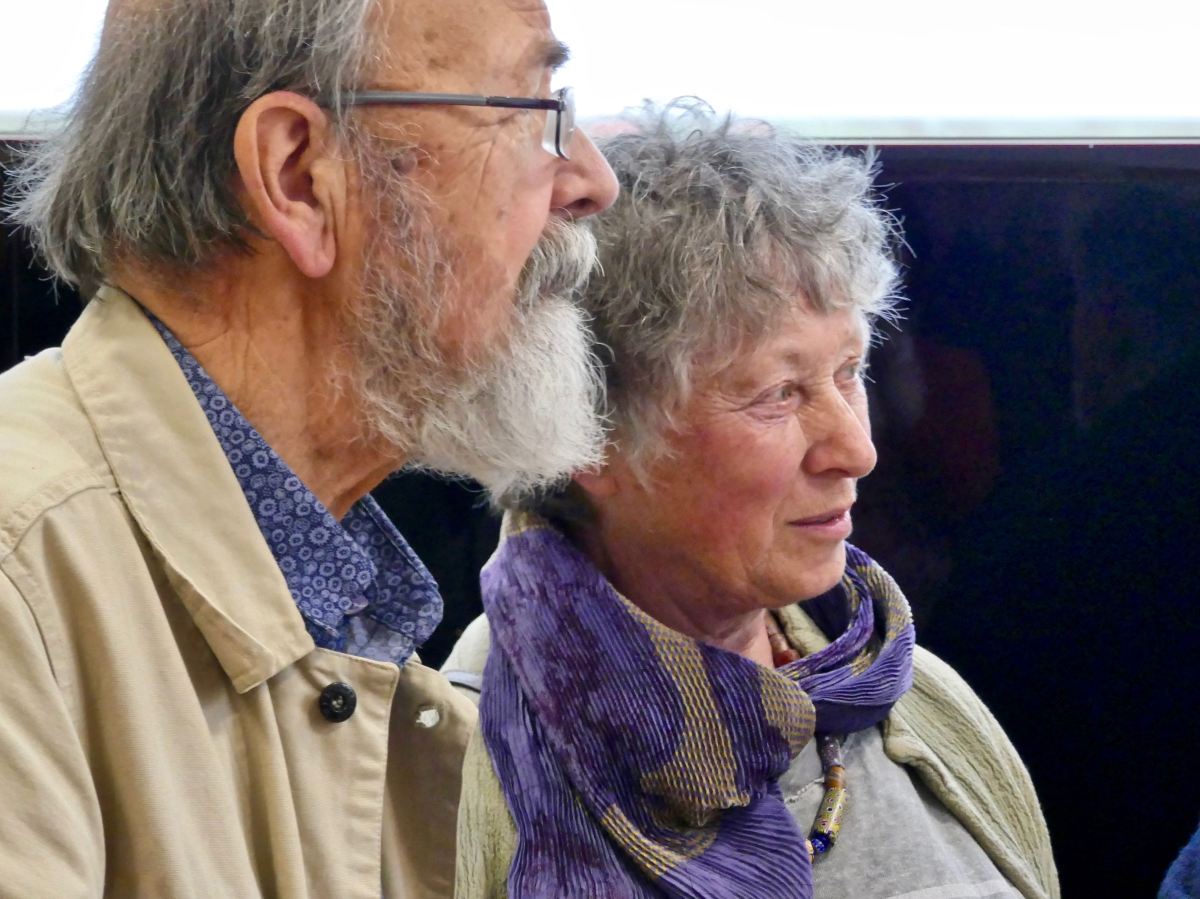
Above – Brian Lalor and Leda May in the Ballydehob Arts Museum, 2019. Leda continued to work until her recent illness, and her blue porcelain ware is familiar to many of us in and around the community.

A documentary about Leda – ‘The Elephant & The Dandelion’, directed by Martin Daley, was made in 2015 – and is available to view here. Leda May was born in London, grew up in Suffolk, and studied ceramics at Hornsea College of Art in the 1960s. She was also drawn to the medium of stained glass which gave her the opportunity to create with colour. Here are two of her glass pieces (reproduced from the documentary film with thanks to the crew):


Leda was at first attracted to the culture and landscapes of India, but in due course Leda and her husband Bob set out in a converted ambulance ‘to visit all the potters in Ireland’, and arrived in West Cork in the late 60s, meeting Christa Reichel at Gurteenakilla. Christa encouraged them to set up their own pottery behind the Flower House: this was known as Luba Studios.

When the Ballydehob Arts Museum opened in 2018, Leda was among the West Cork artists celebrated, and she was always a supporter of the Museum, which has put on several exhibitions to date. The Museum is sited within Bank House, a colourful building owned and run by the community.

This dresser in a household within our village displays several examples of Leda’s work – and other works by Ballydehob’s creative community of artists:

We wish Leda farewell, knowing she has left behind her a legacy of original work which will always be appreciated. But she will principally be remembered as a gentle spirit and talented artist within her community.

Leda May at her wheel in Ballydehob in 1980. A retrospective of Leda’s work is currently being prepared and will be shown this year in the Blue House Gallery, Schull between Friday 28 April and Wednesday 17 May.

